16AUG19240632
U105 TO UBK - HLGL:
FR SQUADRON IN SIGHT, APPROACHING HLGLBIGHT FROM WEST. CURRENT POSITION 53°20'27.3"N 4°16'42.2"E, CURRENT BEARING 073, CURRENT SPEED 15-17KN. MULTIPLE CAPITALS HEAVY ESCORT.-Message sent by Kaleun Rupert Drücker to Heligoland Command upon sighting of the French Toulouse raiding task force.
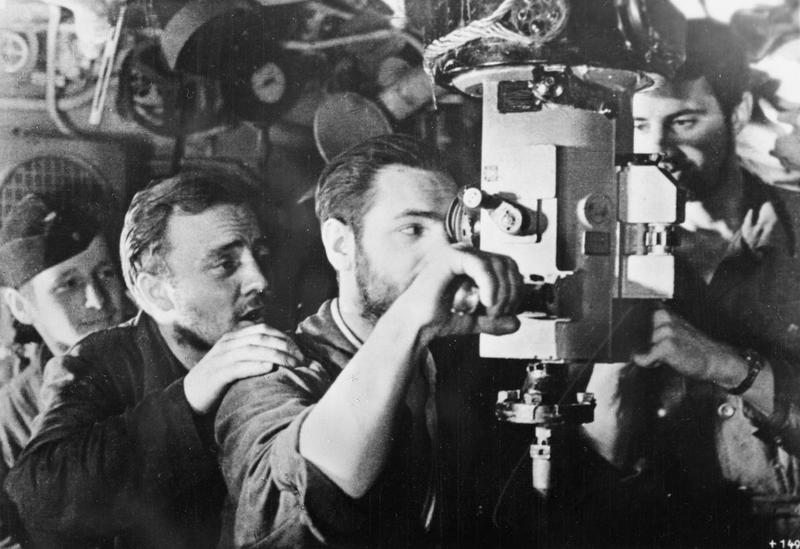
It is the 16th of August: and the Naval ENIGMA comms centres explode with activity. Submarine patrols north of Texel report a massive mobilisation of the French fleet. At least two capital ships are seen, moving towards the east; scout Zeppelins manage to glimpse the French task force making its way towards the Helgoland Bight. These waters, so often the site of clashes in the past, are about to be wreathed in smoke and fire again.
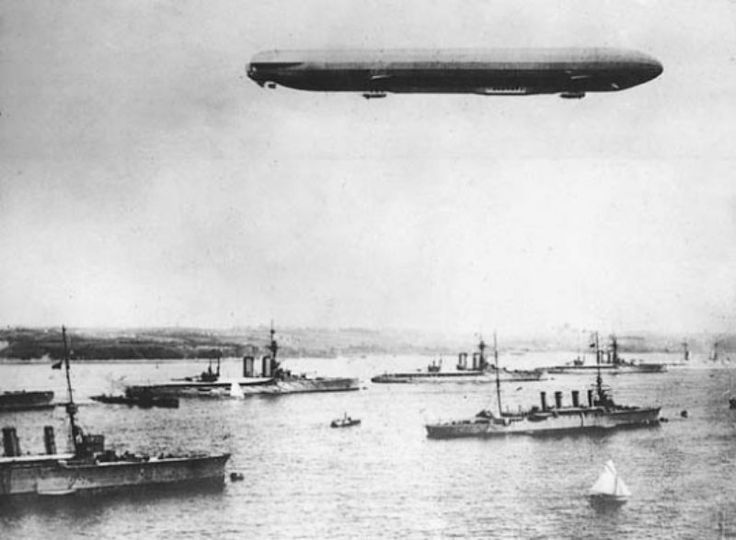
Galster mobilises his fleet
Mackensen and
Zähringen are docked in Emden: they are recalled posthaste and they make best speed towards Helgoland. The rest of the available
Hochseeflotte, consisting of the
Schlachtkreuzer Graf Spee, Hindenburg and
Lützow and the
Schlachtschiffe Elsass and
Schwaben scramble to find the French squadron.
Scheer, commanding from on board the
Elsass is
pissed off: the analysts of the
Admiralität have assured him that the French would not push into German waters without Russian backing. He has a few choice words for them; but his ships are ready. Hipper, flying his flag on the
Mackensen has contacted him and has assured him that he is only a couple of hours away: Scheer's priority is to find the French and pin them down, while the
Jagdhund closes the jaws of the trap.
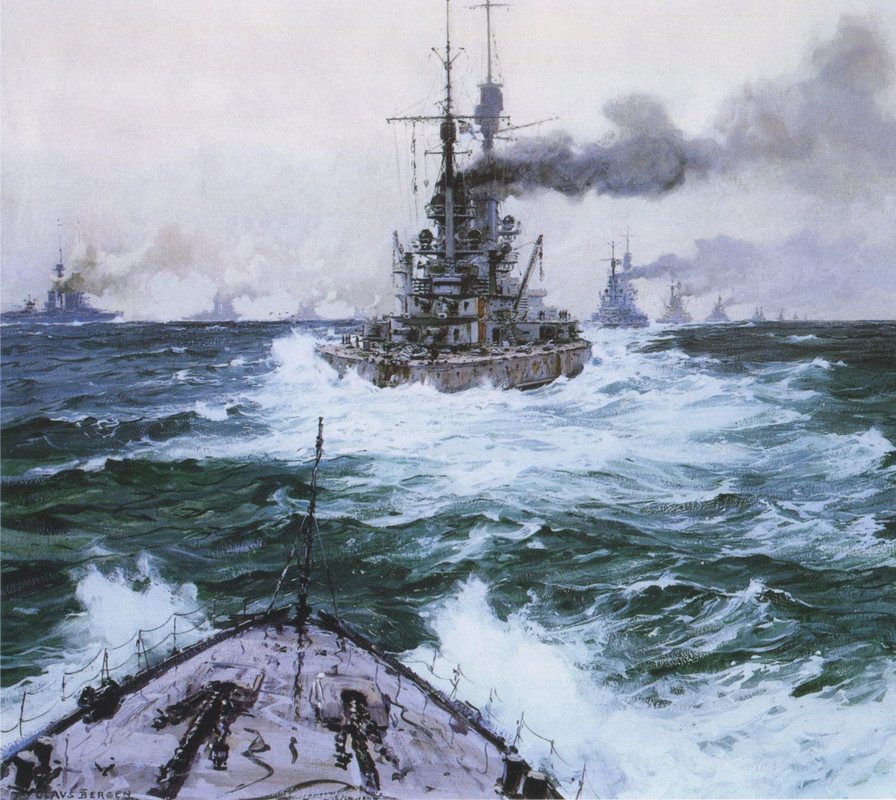
If they play this properly, they can
end the French fleet today. If they do not coordinate properly, the French might escape - or, worse, slip by the German force to cause serious damage to port infrastructure.
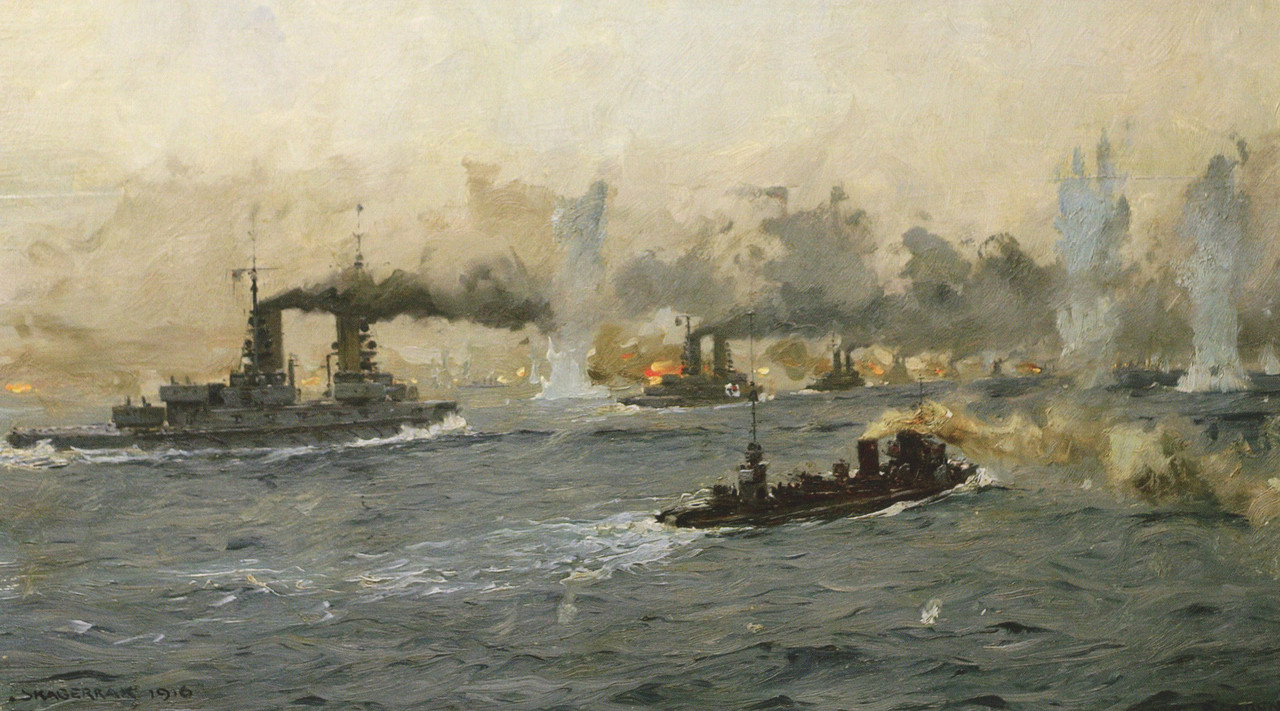
12:49: the morning mist has lifted; and Scheer's squadron has barely left Helgoland, when his lookouts spot enemy smoke in the distance. A cold hand grips Scheer's heart:
they have almost made it to Emden unopposed. And there is no sign of Hipper.
The utter failure of the German intelligence operatives is staggering, but Scheer has no time to truly contemplate it: he has other things to occupy him. Fire flashes along the French battle-line: shells whizz over the heads of the Germans, landing around and in front and behind and
on the German ships.
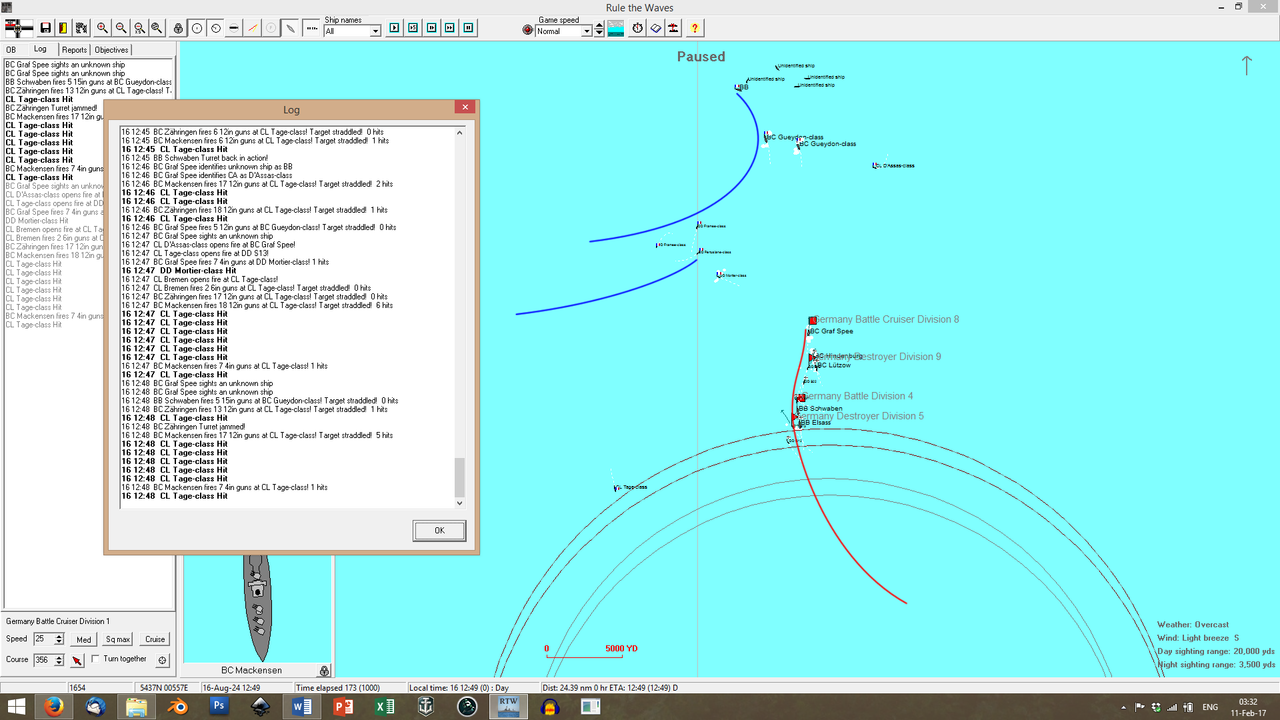
The French battle-line turns north, in a smooth graceful curve, keeping constant fire on the approaching Germans. Scheer points his bows at the French ships and resultely closes the range: he needs to push them away from the coastal civilian traffic, and if he has to give them his T to do so, then so be it. A French light cruiser (the
Forbin, a
Tage-class raider) attempts to slip by the guns of the German fleet towards the south.
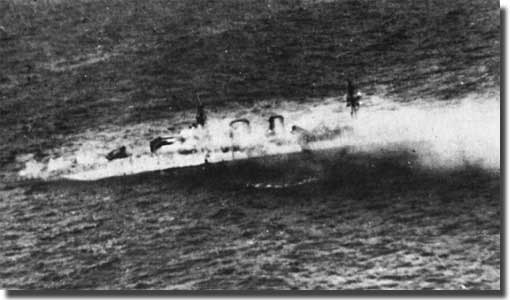
Hipper chooses this moment to make his appearance, closing in from the south. The guns of the
Mackensen track the
Forbin and engage at maximum range: the new Improved Directors guide her shots to the target unerringly. The
Forbin is struck by six 12-inch shells at 12:47 and five more a minute later; her light armour crumples like paper and her boilers
burn sky-high.
Meanwhile, the
Graf Spee is leading the charge against the French battleline, and French fire is concentrating on the massive
Schlachtkreuzer bearing down on them. Scheer tries to contact them, order them to break off, let the
Schlachtschiffe and their massive armour take up forward positions; but the
Graf Spee's wireless aerials have been blown clean off and the ship is operating under local command. And her commanding officer,
Kapitän zur Zee Markus Neufahrer has no intention of hiding behind Scheer's skirts. For over ten years, now, the
Zähringen-class
Schlachtkreuzer have led the charge, using their massive bulk to shield their smaller allies; this time is no exception.
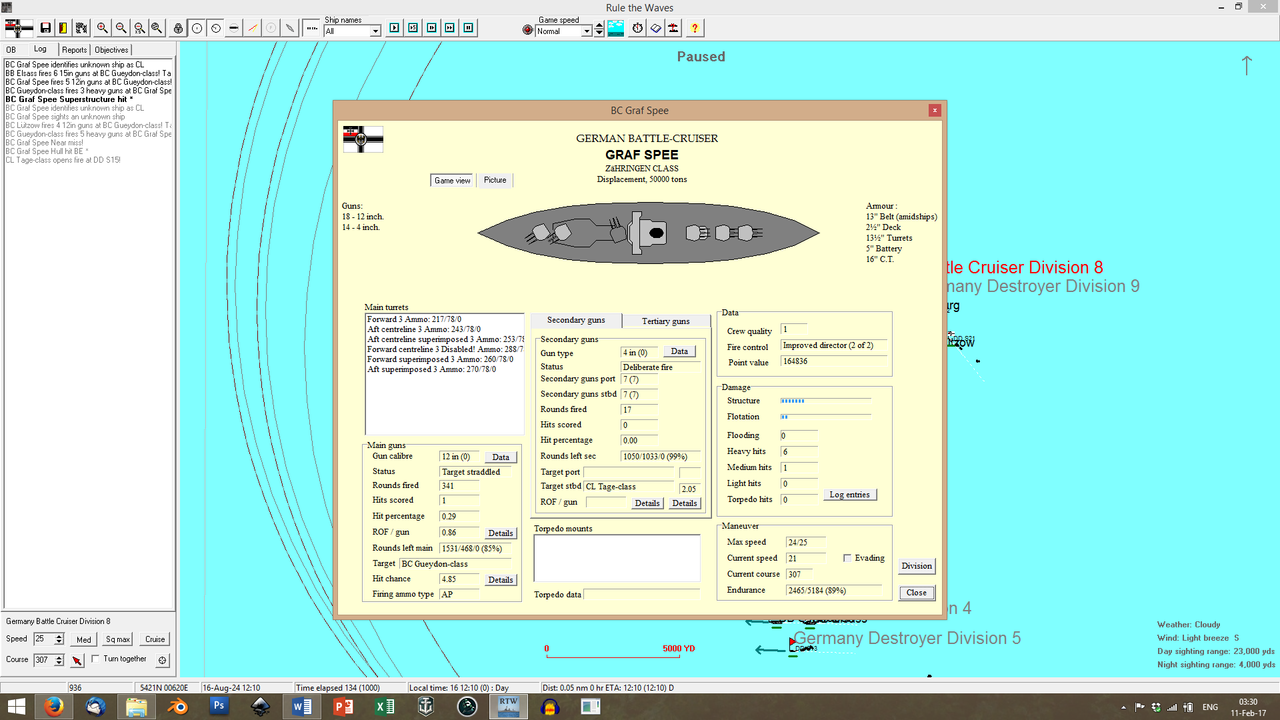
There are at least three capital ships in the enemy battle-line, all of them with
heavy guns (14 inchers and higher); and they all focus their attention on the
Graf. Over the course of ten minutes, the German ship is hit six times, on her superstructure and forward belt. Her 'C' Turret jams on its bearings; and her funnel is penetrated, clogging the updraft. She loses a knot of speed, but doggedly closes the distance, training her guns on the closest French capital: a
Guedon-class 14-inch battlecruiser.
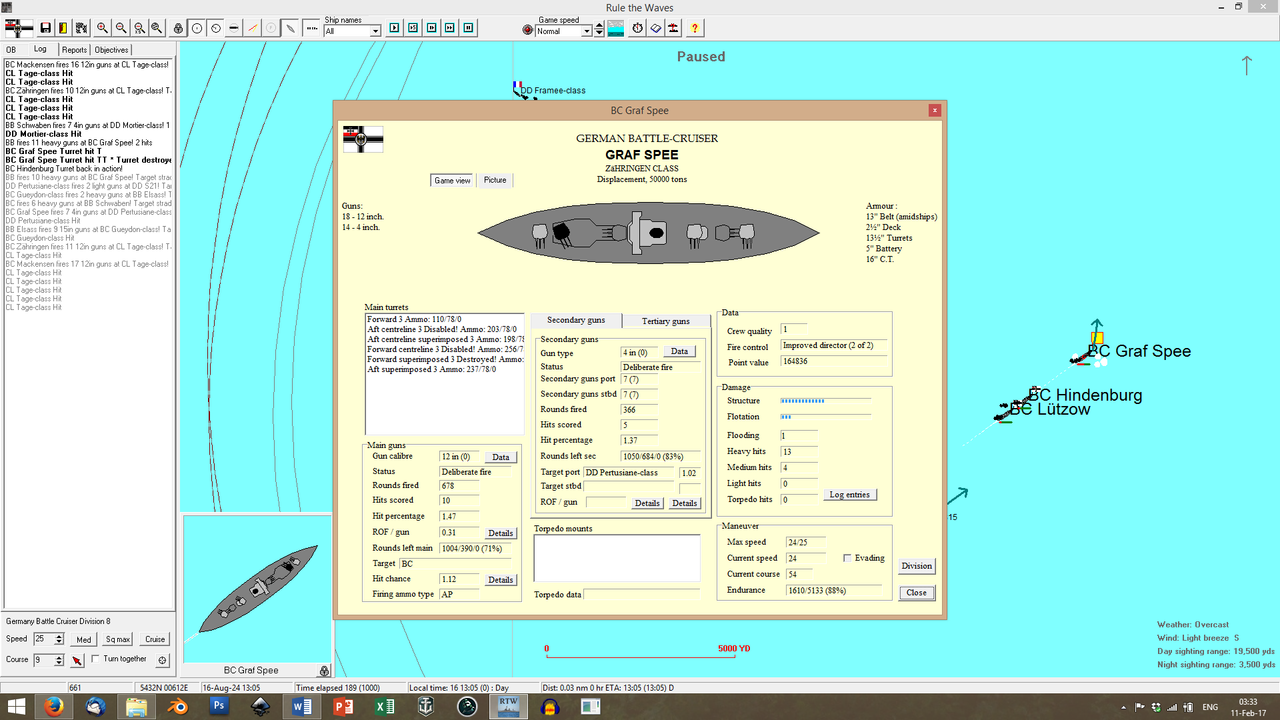 Bam
Bam.
The French are having none of that. As the German battleline turns towards the east, to bring their entire broadsides to bear, the French lock onto the
Graf's bigger silhouette and hit her
again with accurate heavy fire. Her 'Y' turret jams before it can be brought to bear; her 'B' turret is penetrated and its top blows off, riding a gout of flame. Thankfully, the unfortunate gunners had followed safety protocols and the flash fire does not reach the magazines.
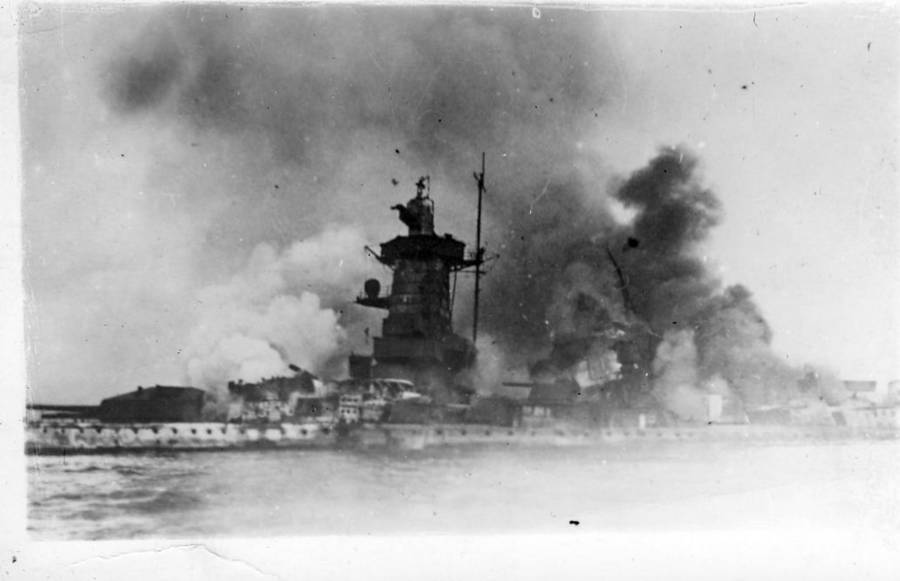
Four more shells smash into her superstructure like hammers and pound it into splinters. More than half of her upperworks are now a mass of glowing slag; fires threaten to break out across four decks. Her damcon crews race to respond.
But she does not turn away; and her remaining guns are thundering. She has already put more than
six hundred shells downrange, and she has scored ten hits on the
Guedon.
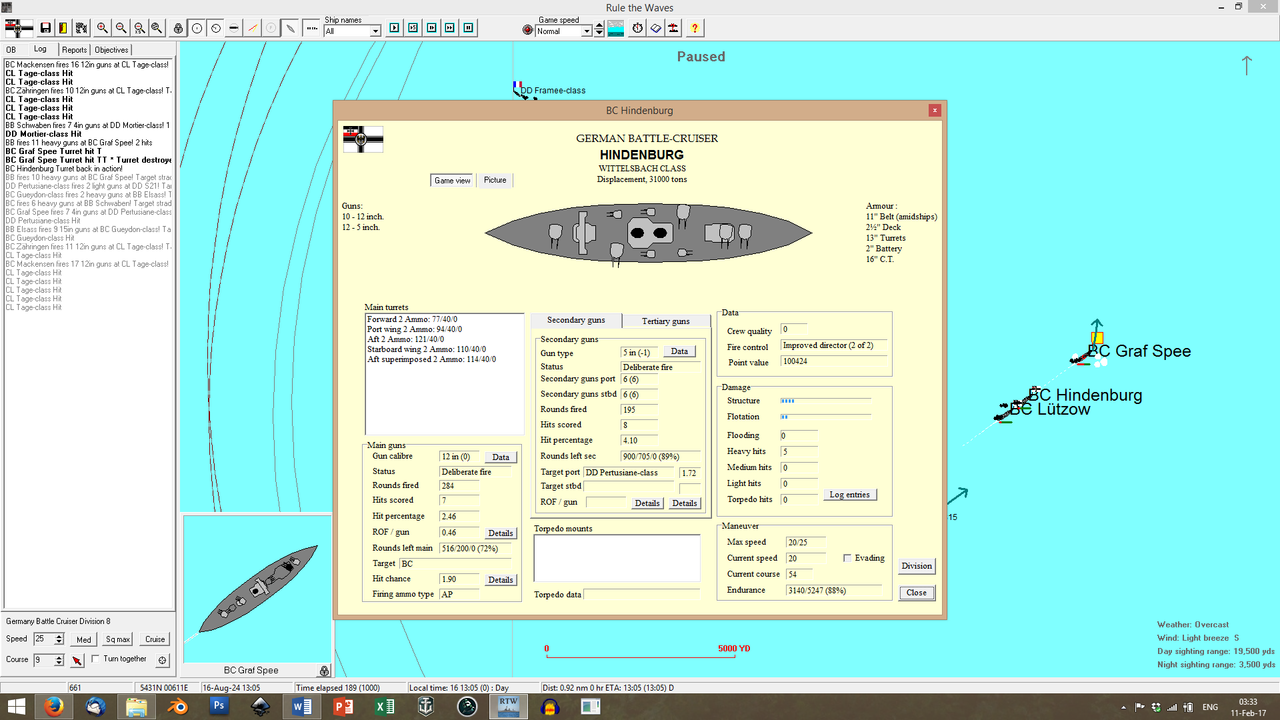
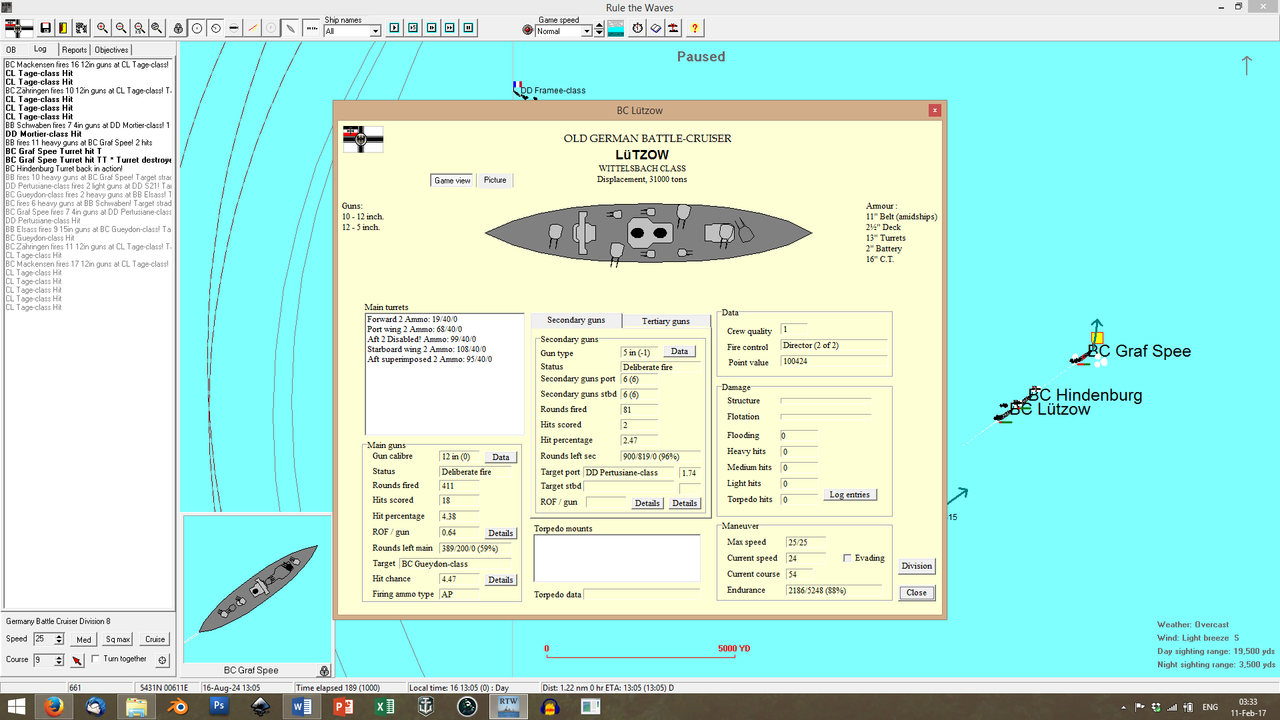
She is not alone.
Hindenburg and
Lützow are following closely, in the time-honoured tradition of the
Zähringen-
Wittelsbach wolfpacks; and the fire that their bigger sister is drawing is fire that
they don't have to suffer through. Their fire control directors are unhindered and their firing solutions are near-perfect.
Hindenburg locks onto the
Guedon that the
Graf has bloodied and puts seven more 12-inch shells into her;
Lützow does even better (even though she's operating with older directors) and drills
eighteen shells into the French battlecruiser's belt.
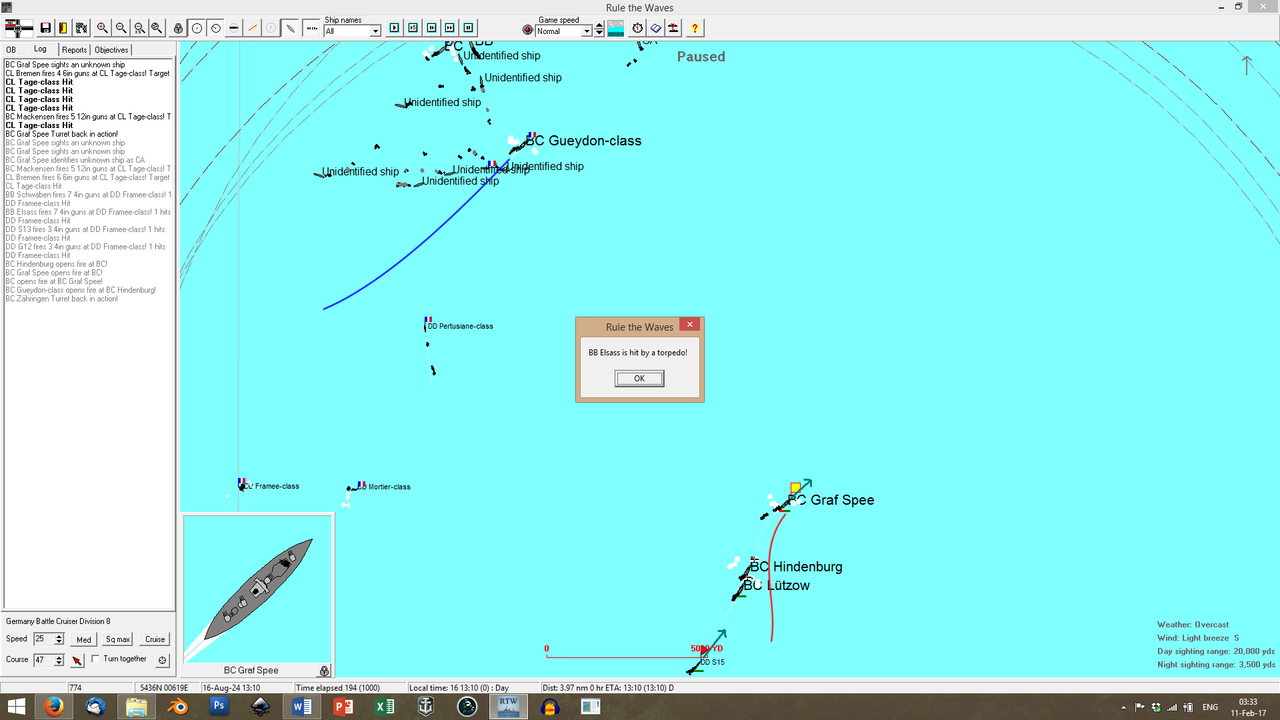
Throughout all this mess, Scheer is desperately trying to get his battleships into the fight. His singular focus is drawing fire away from the
Schlachtkreuzer; but in his mad charge forwards he overextends. Three French destroyers (a
Mortier-class, a
Pertusiane-class and a
Framée-class) find their ways to his unguarded flank; and a torpedo fired at long range strikes the
Elsass on her midships belt. The ship heaves and Scheer demands a damage report.
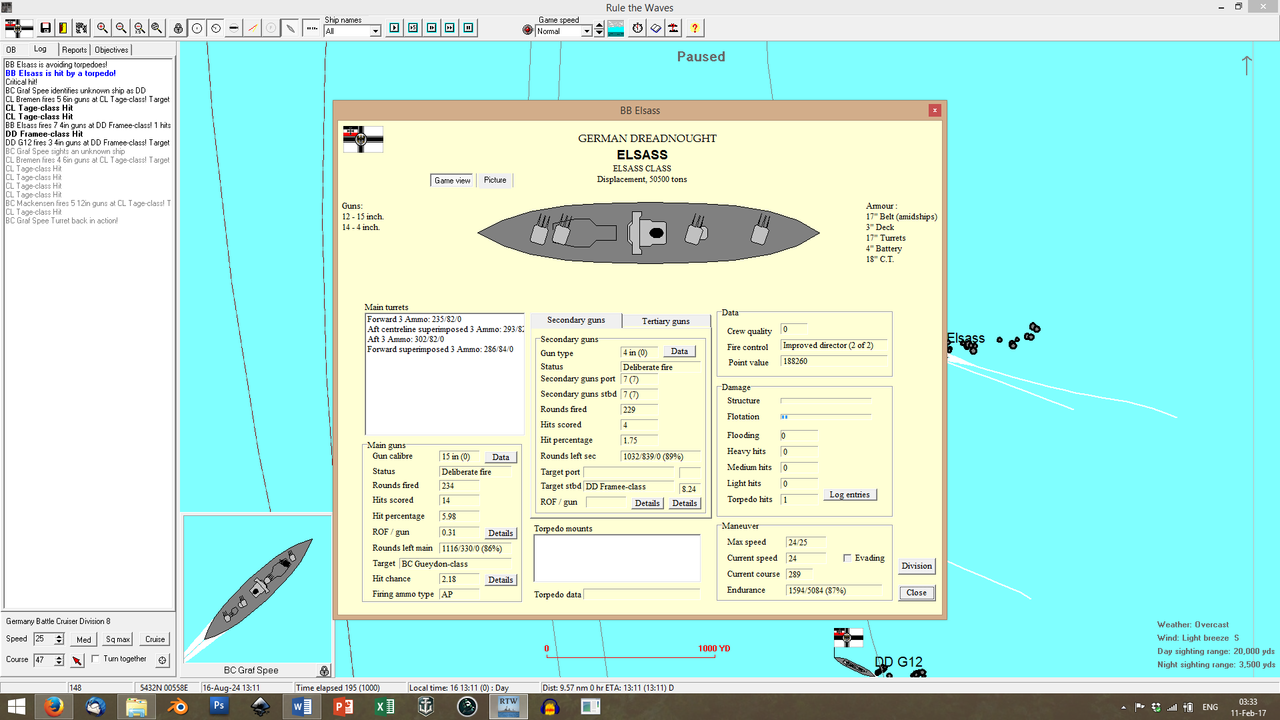
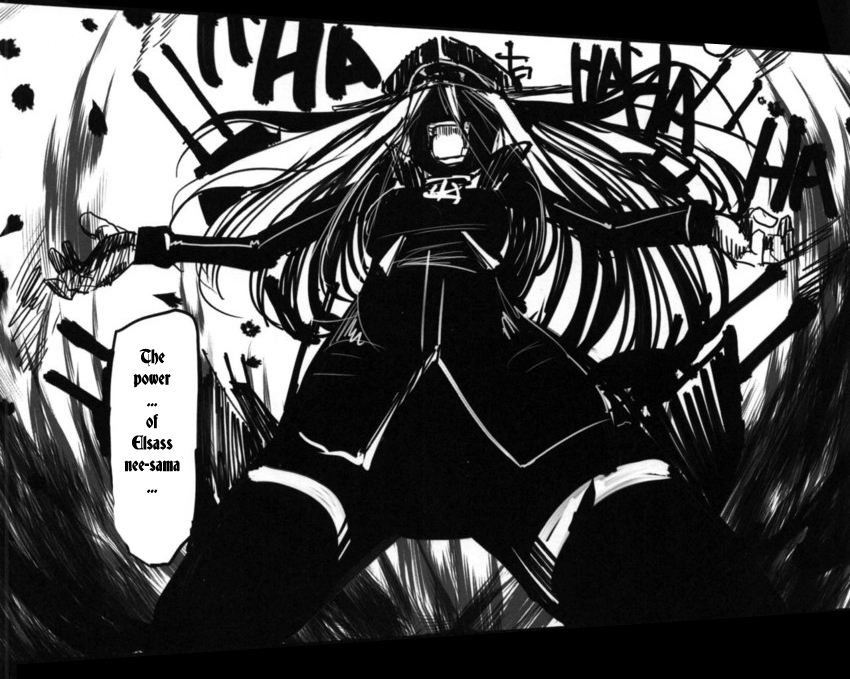
Aha.
AHAHAHAHAHA.
TWO FLOTATION PIPS NO FLOODING AHAHAHAHA.
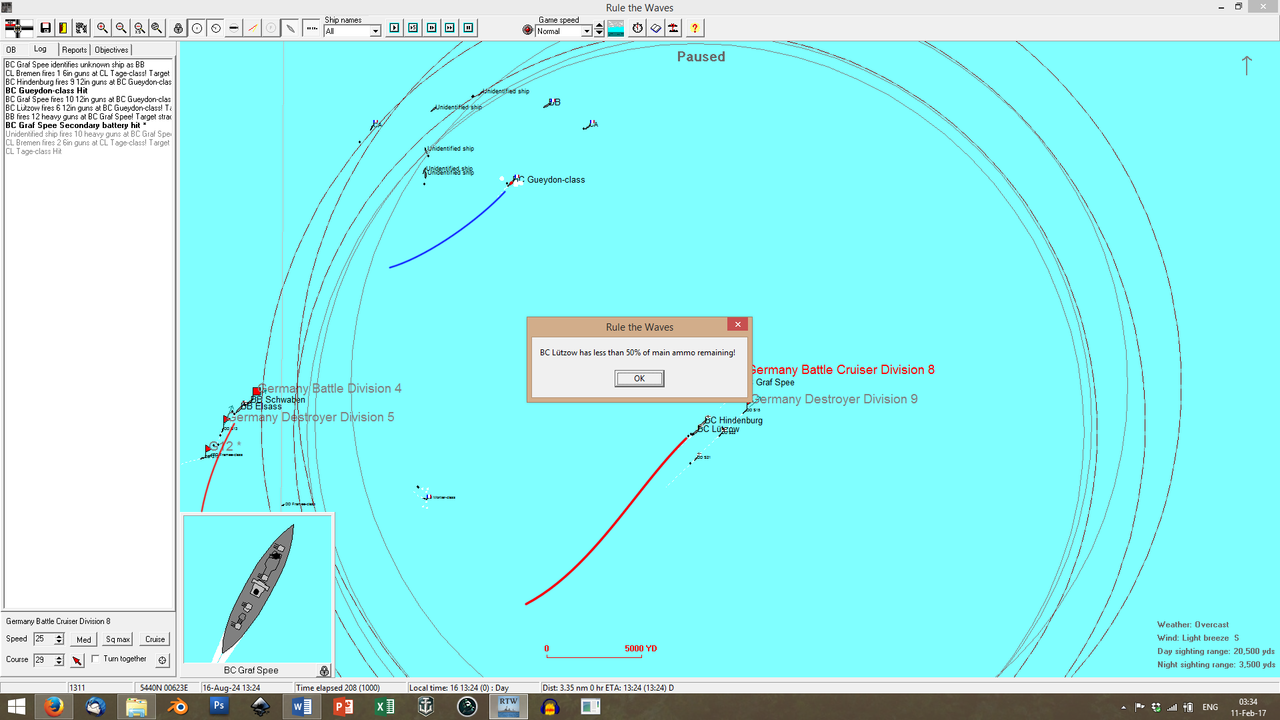
Scheer's evasive maneuvers split the battleship force away from the
Schlachtkreuzer; they slot onto the
Guedon's ass and try to catch up. Meanwhile, the
Schlachtkreuzer redouble their efforts:
Lützow already has chewed through half of her ammo stores. But the
Graf is
still the centre of attention for the French. One of the French capitals - a slow battleship, from what the German lookouts on the
Elsass can make out, fires at the mangled German behemoth; and one of her shells penetrates one of the
Graf's secondary turrets, blowing it clear off its bearings. By now, the ship has taken more than twenty hits from capital-grade weapons and has 'only' scored fourteen hits in return.
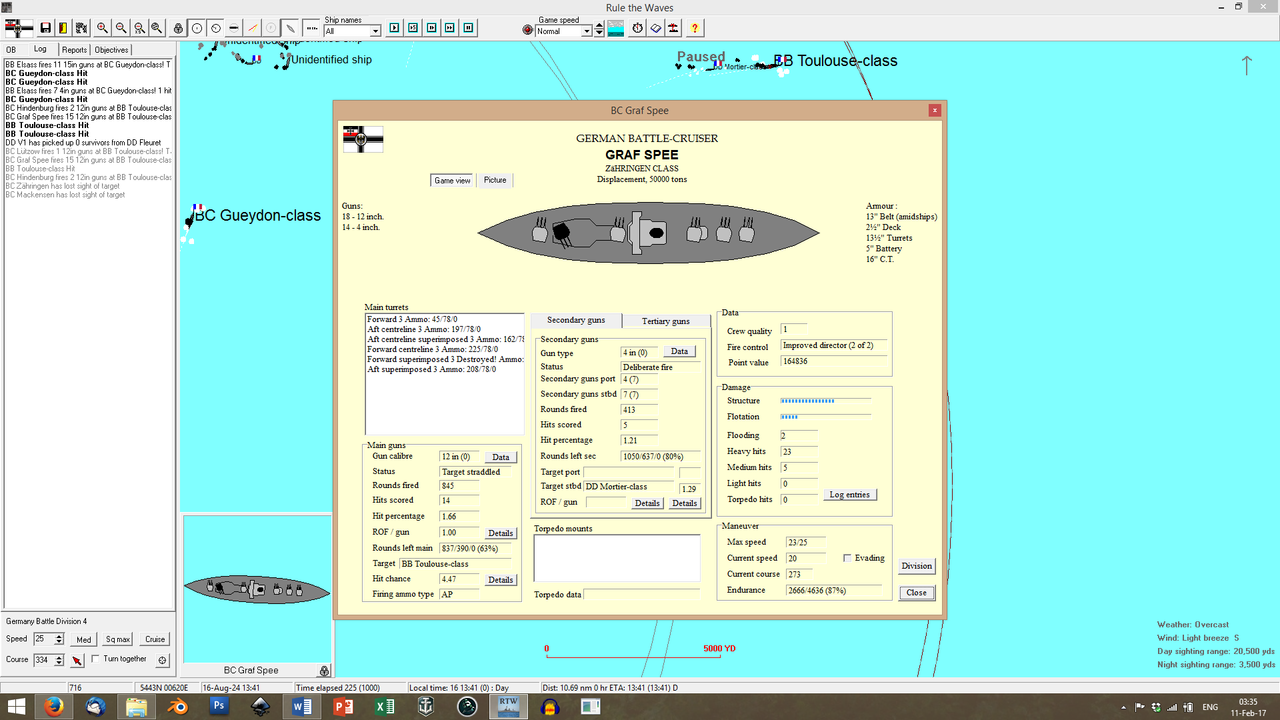
However, the
Graf's damcon crews have managed to field-repair her turret drives. 'B' turret is utterly dead, of course, but the rest of her battery (fifteen 12-inchers) can now traverse and engage. Neufahrer orders a hard turn to port for his battle-group, to unshadow his starboard secondaries and make sure that no enemy destroyers will get too close.
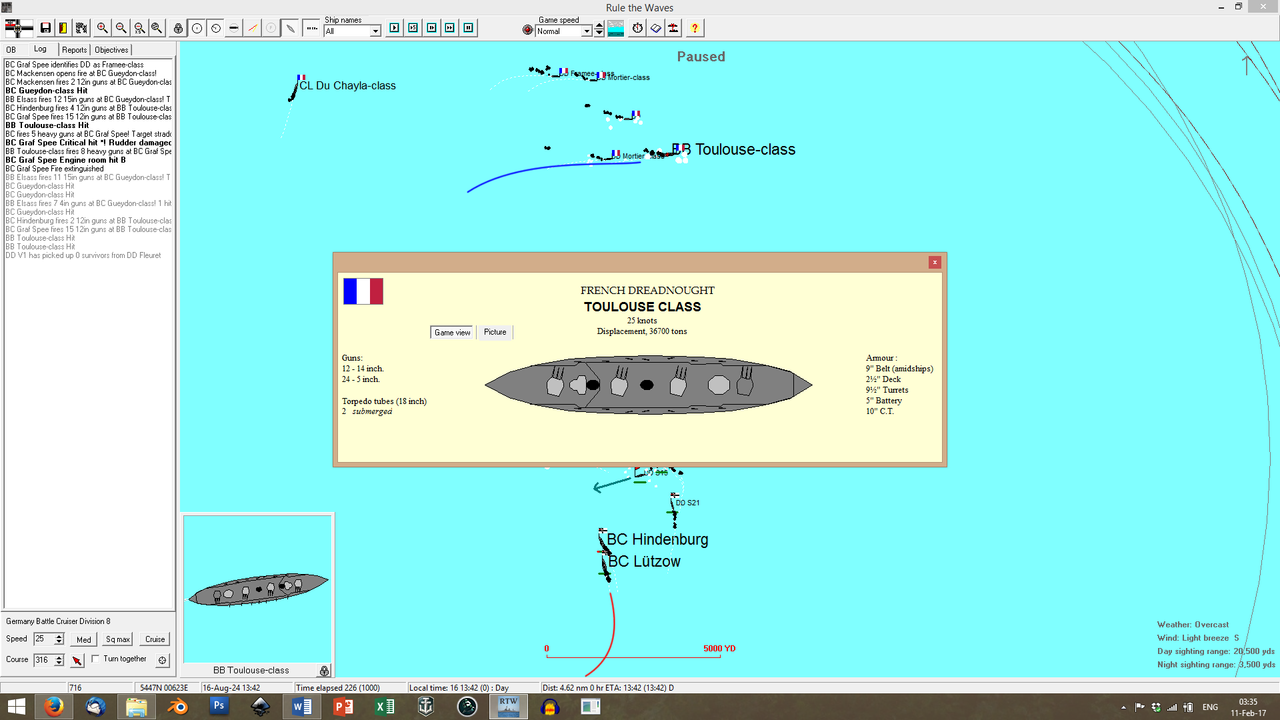
And then he gets a good look at what is firing at him.
Buggery. This is a
Toulouse, a relatively old French-version of the 'triangle ship'. She's a cheap, pocket version of the ships that the Brits and Japanese and Italians tried to produce to counter the
Zähringens. She's got a jammed turret, but she's still putting accur-
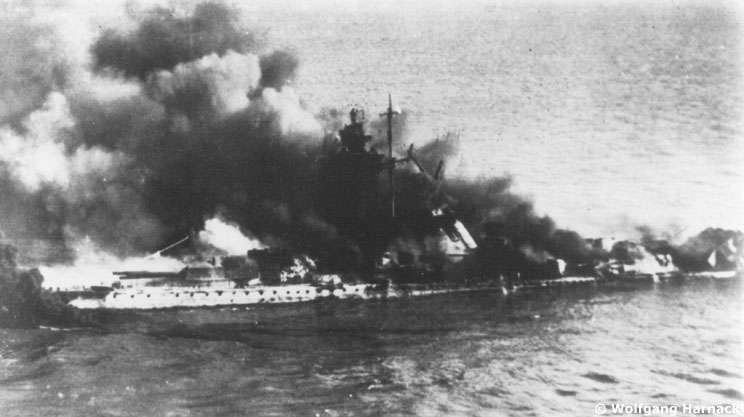 BANG
BANGThe entire ship shakes - the helmsman reports a total loss of control and Neufahrer's face goes white. The rudder is hit and it is jammed fully to port. The
Graf is uncontrollable and circling; and fully exposed to the enemy guns. Thankfully, her armor defeats
another French shell that tries to find its way into her engine room.
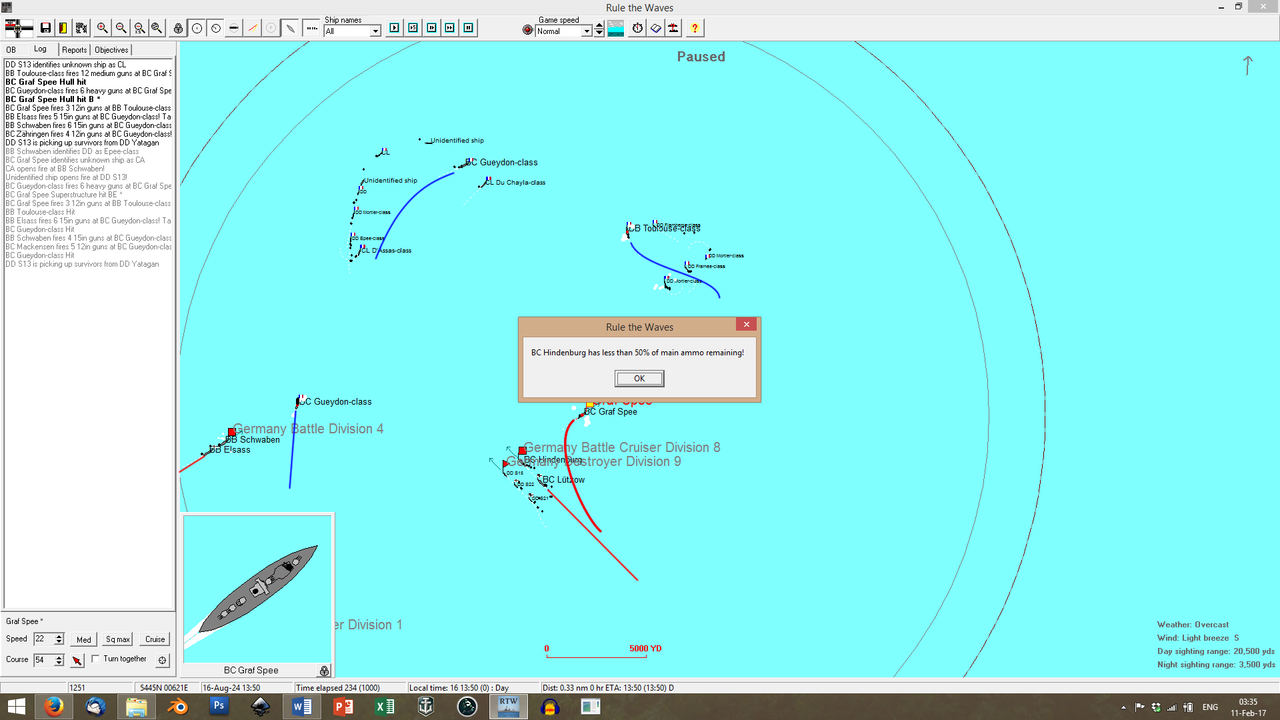
It takes the
Graf's damcon crews several grueling minutes to restore her rudder, and, when they do, they are forced to jettison one of her twin rudders that dug limply into the water like an anchor. She now handles like a pig and needs to be steered with the help of her props, but she
does answer the helm partially; and Neufahrer takes her back towards the starboard. He is sitting directly between the three enemy capitals, taking fire from every side and he needs to disengage -
-and that's when the
Elsass and the
Schwaben finally run down the
Guedon and fire into her aft from a range of less than four thousand yards. Twelve 15-inch rifles boom -
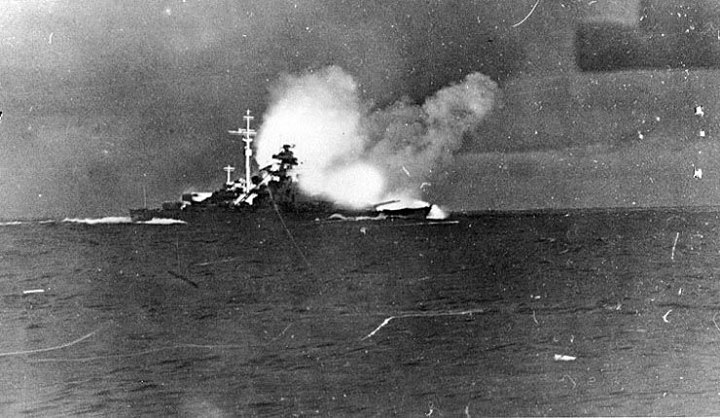
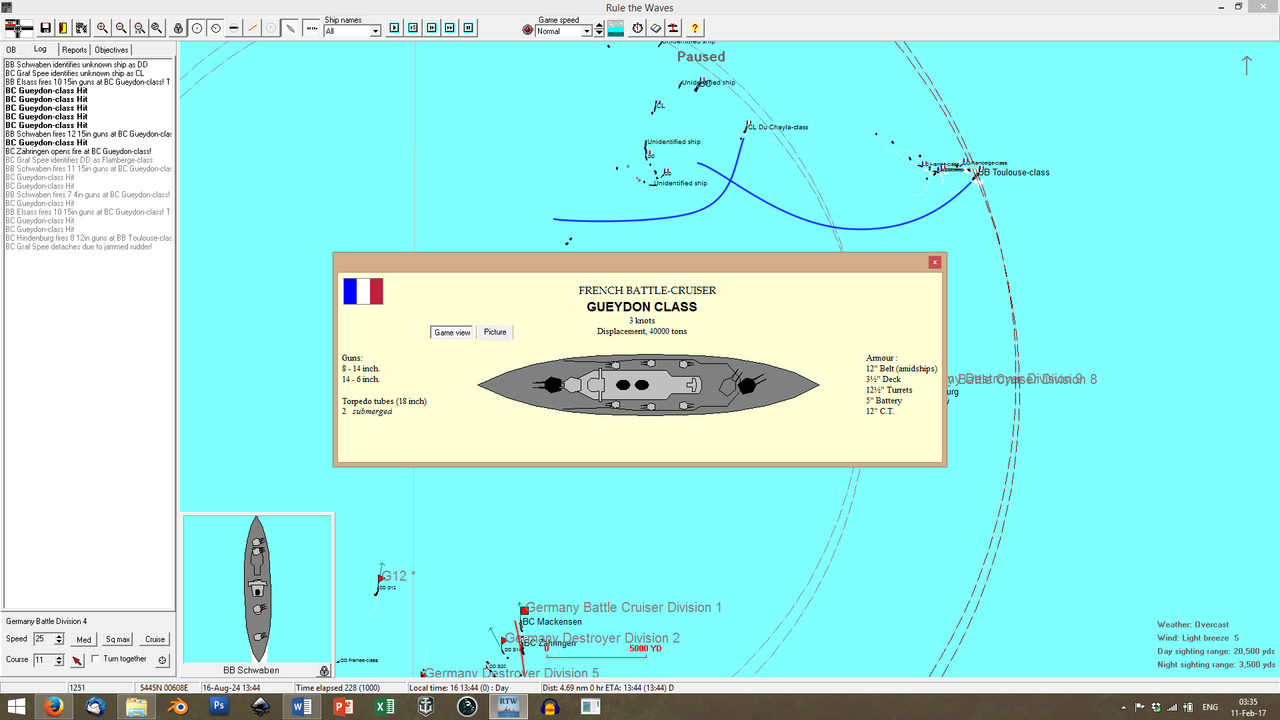
-and five shells find their way into and through the Frenchman's aft armour. Smoke and fire belches from her funnels and three of her turrets go up like roman candles. She is
finally dead.
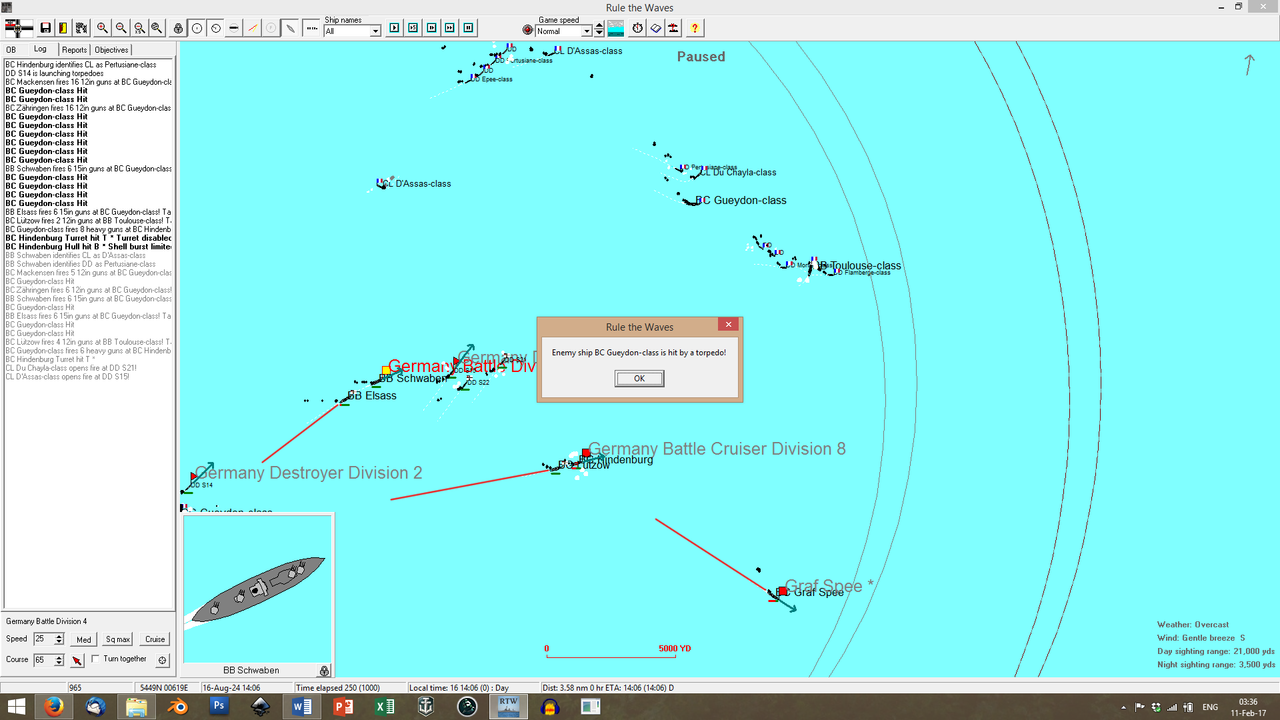
Neufahrer limps away and Sheer's division takes up point. The
Hindenburg is unlucky enough to receive a final slap from the second
Guedon, and she loses a turret, before the attention of the Frenchmen shifts very firmly onto the charging German battleships.
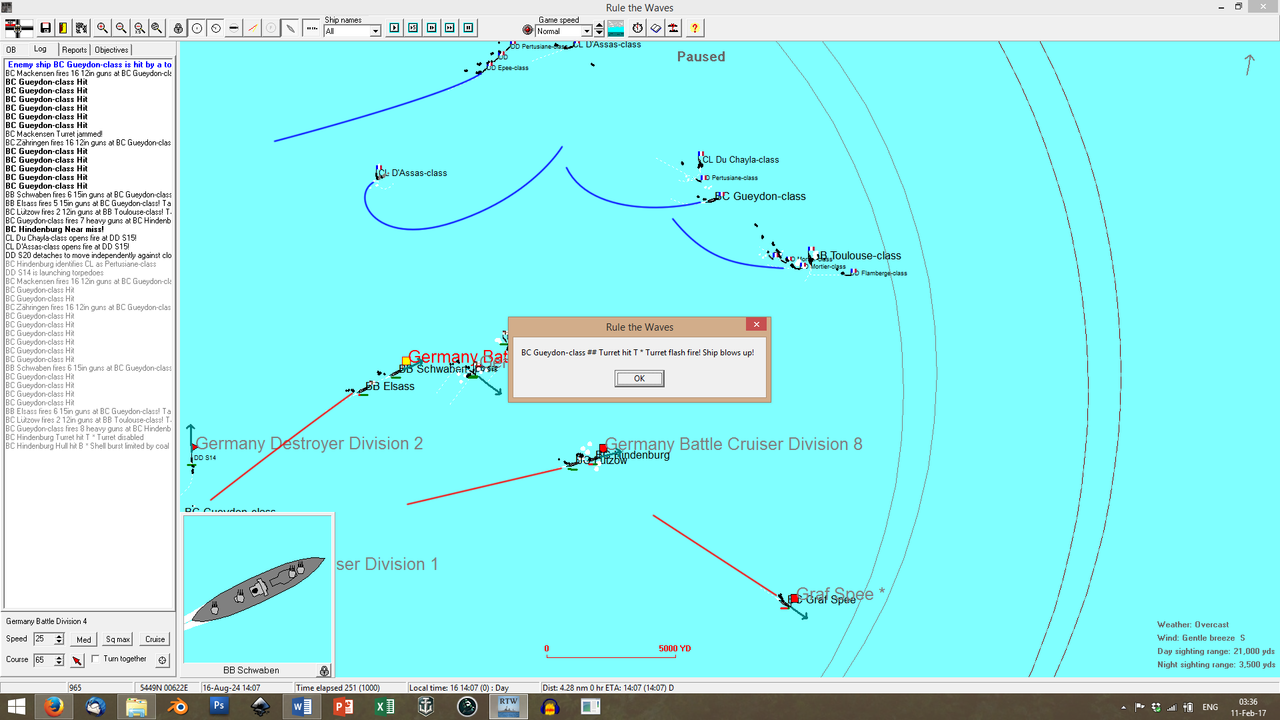
Behind the Germans, the dead
Guedon goes up in an apocalyptic fireball. The fires have reached her magazines.
Meanwhile, the
Graf is-
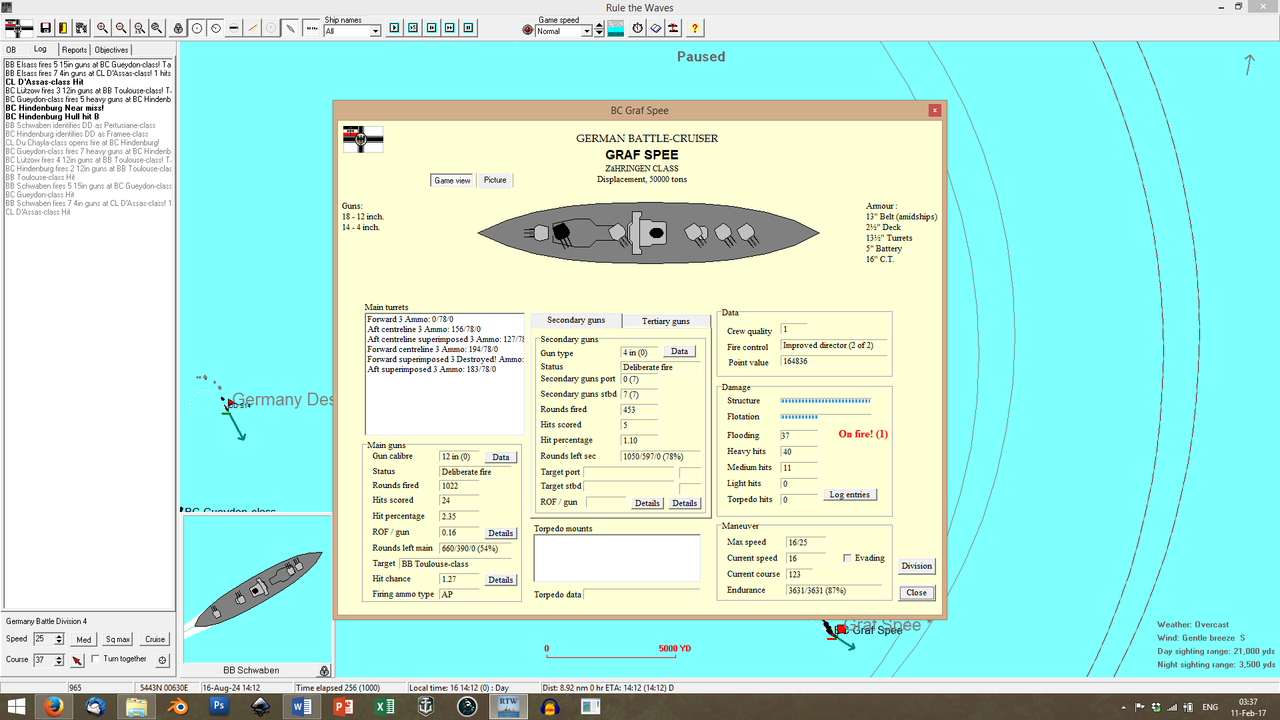

-HOLY ****-
What's left of her superstructure is burning, but most of it is utter, glowing slag. All of her portside secondaries are
gone. She is listing heavily and half of her reserve buoyancy is lost. She can't make more than 16 knots, and she
shouldn't, because she's
flooding, taking on nearly thirty tons of water every minute. Her decks are a
slaughterhouse. And her damcon crews are
fighting like demons to keep that fire from reaching the magazines.
How the **** is she still floating?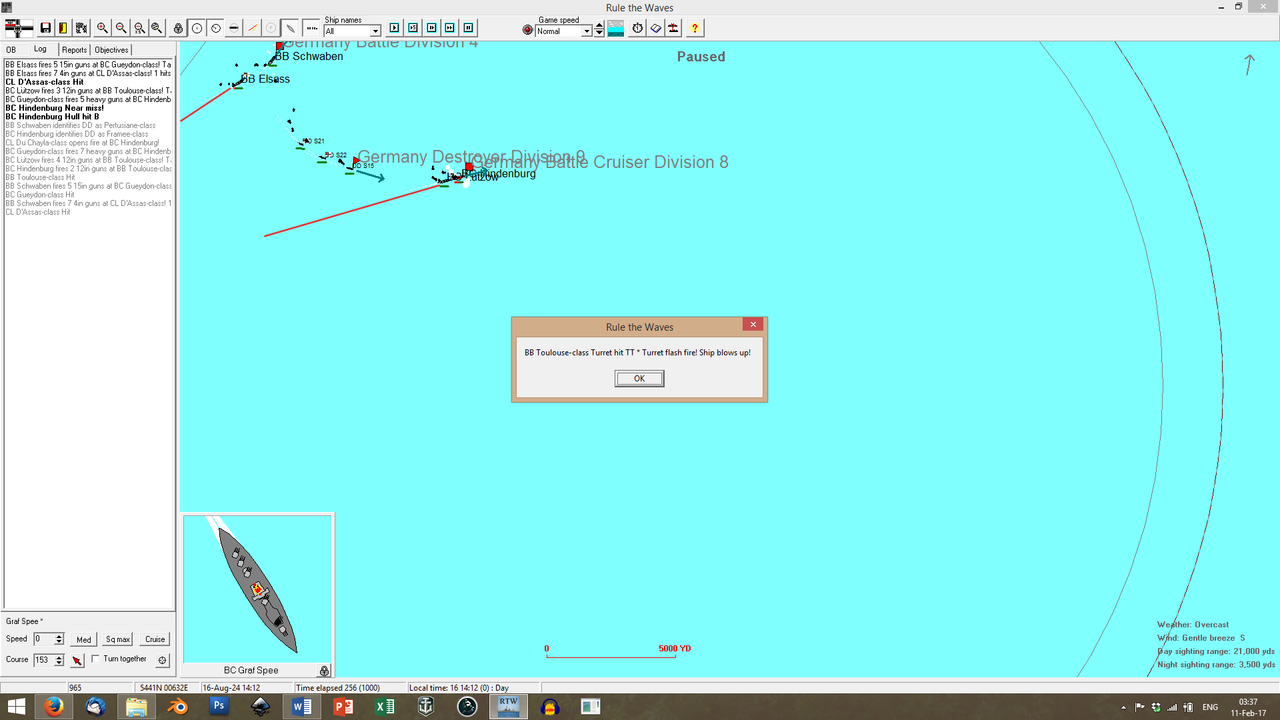
But from behind her comes another flash and a cloud of smoke that reaches sky-high. Something has struck the
Toulouse - and her weak, nine-inch belt has not withstood the blow. Her magazines go up and the Frenchman dies.
Post-battle analysis will show that only the
Hindenburg was firing at her at the time. Gott
verdammt, the
Wittelsbachs are awesome. Built
thirteen years ago and they're still wiping the floor with the garlic-eaters.
Suddenly, that last
Guedon is very much alone.
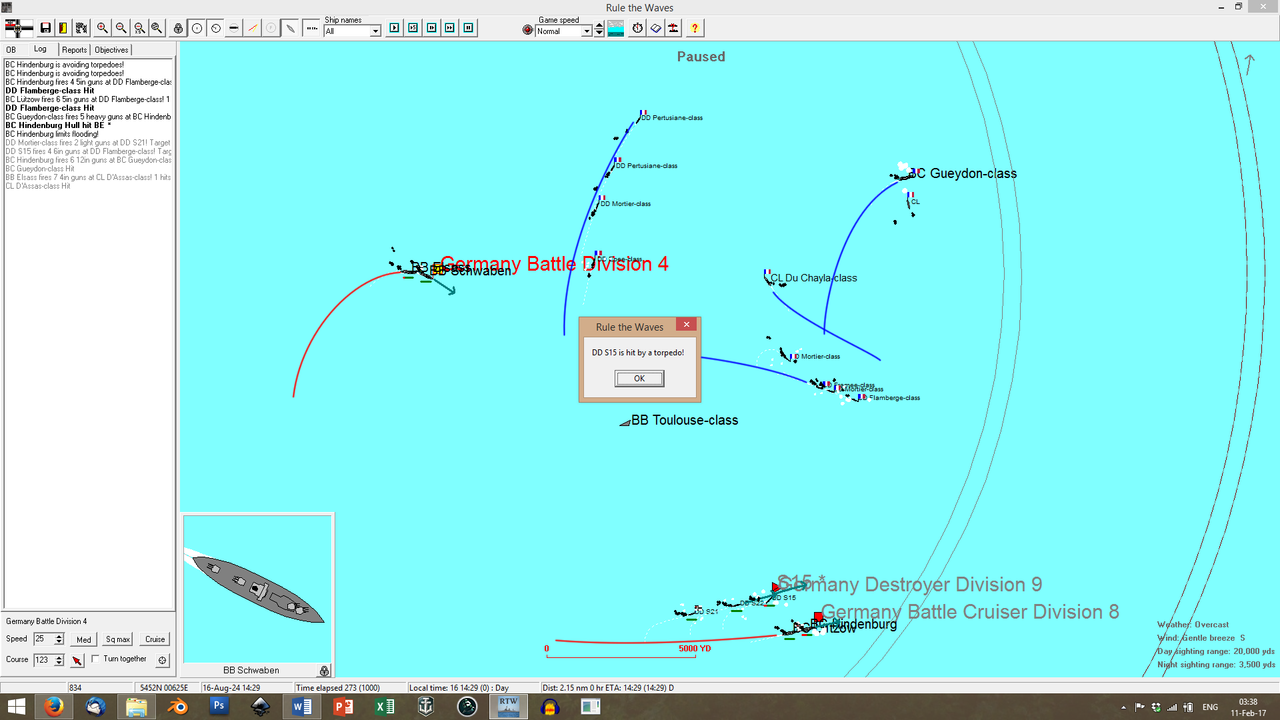
The Destroyers fan out to cover her flanks, and help her retreat. She
can do so - she can certainly outrun every German capital ship on the field. But she'll need time - and her destroyers are offering their lives to provide her with this time.
The
Hindenburg and
Lützow see what's happening and turn their guns to engage the closing destroyers. But it's too late:
S15 is the first to buck wildly, as a French torpedo finds her mark and buries its warhead into the fragile tincan's hull.
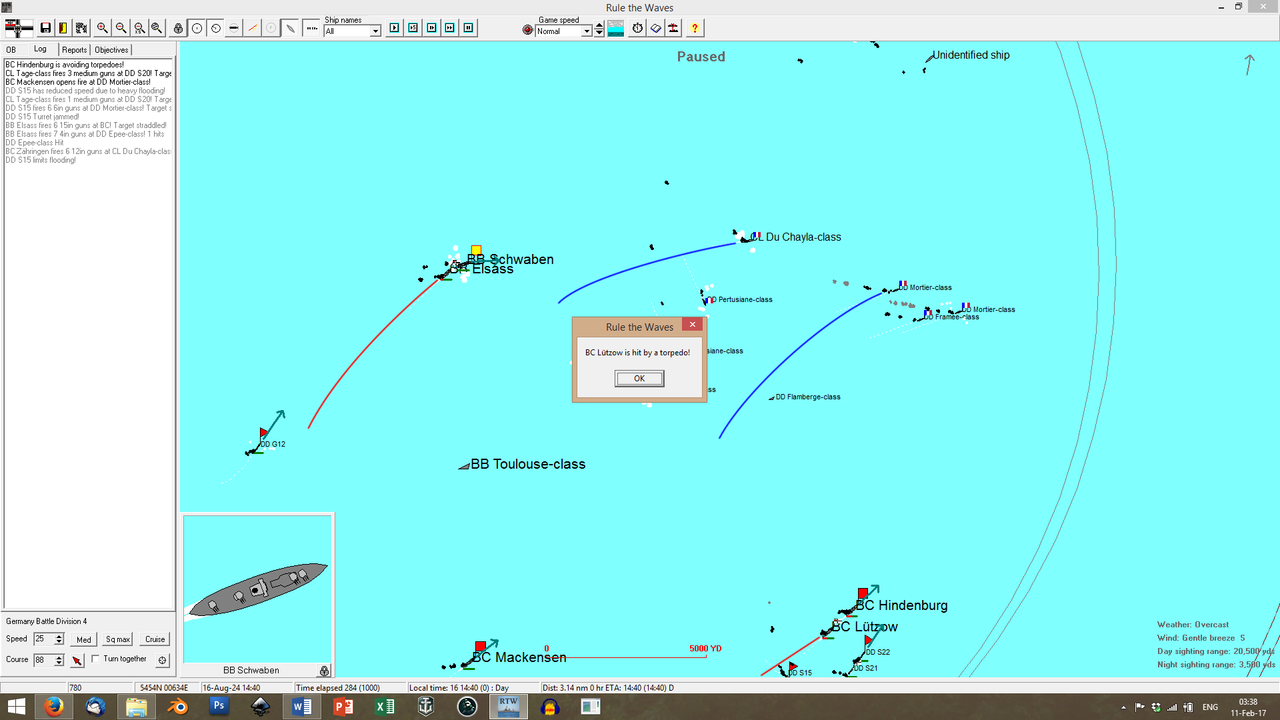 Hindenburg
Hindenburg has barely time to spot the incoming spread and engage torpedobeats. A single French fish screams past her.
Lützow is not so lucky. She finds herself facing a spread of three; and ends up taking one on her starboard midships.
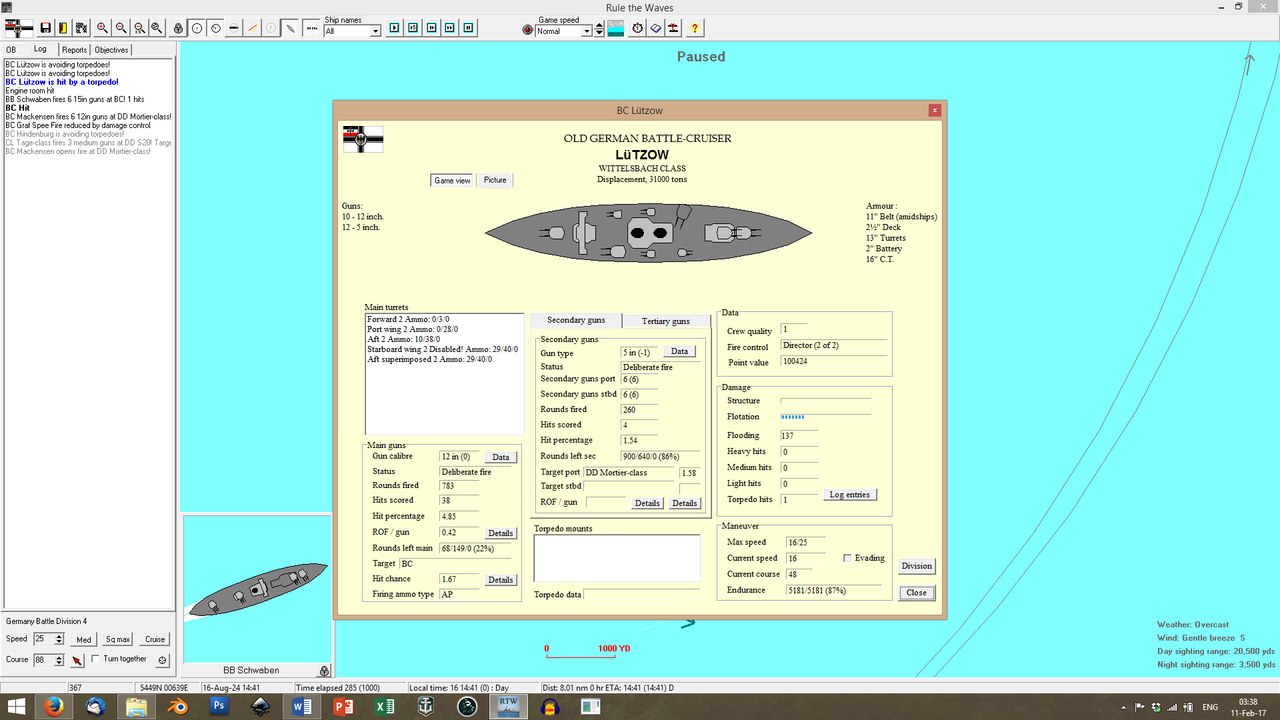
She ends up losing a boiler and her starboard wing turret - and she's flooding heavily. Her captain falls out of formation. There is little she can contribute, with her stricken engine. She sails south, to join up with the
Graf and provide aid.
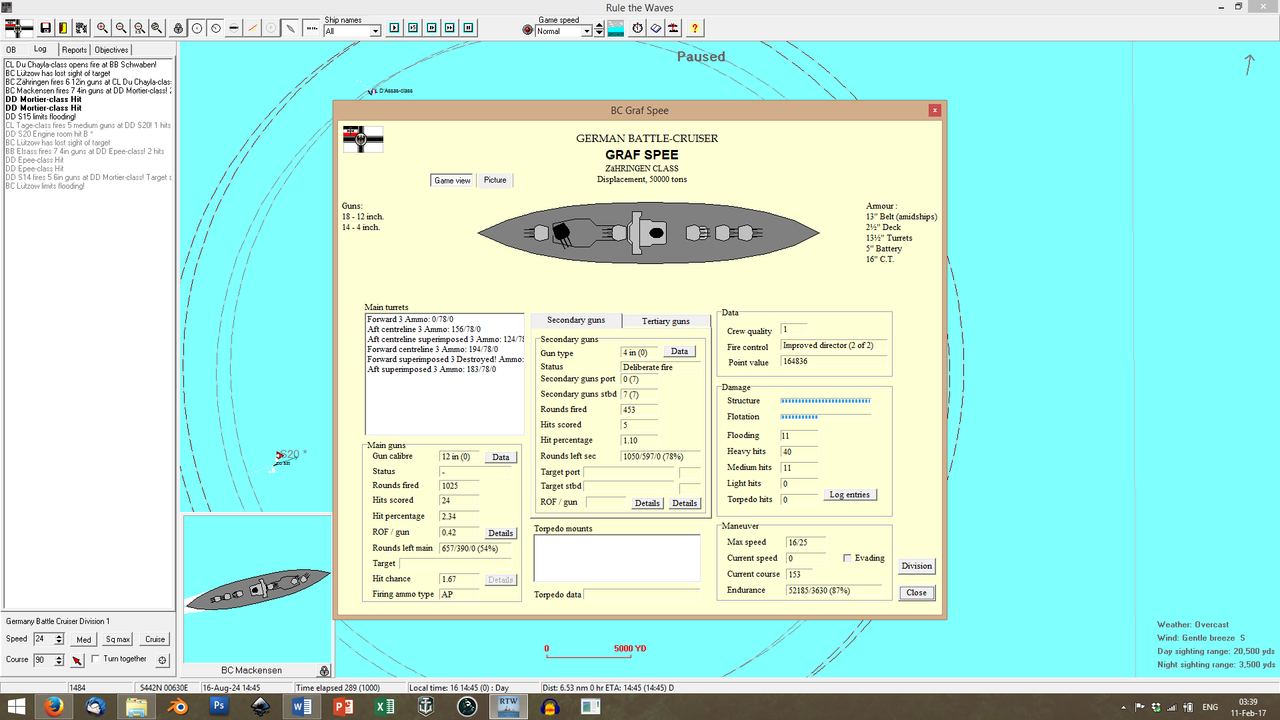
The
Graf...surprisingly does not
require help. She has put out the fires; and her flooding is under control. Somehow,
somehow she is still steerable and able to make cruise speed to Helgoland.
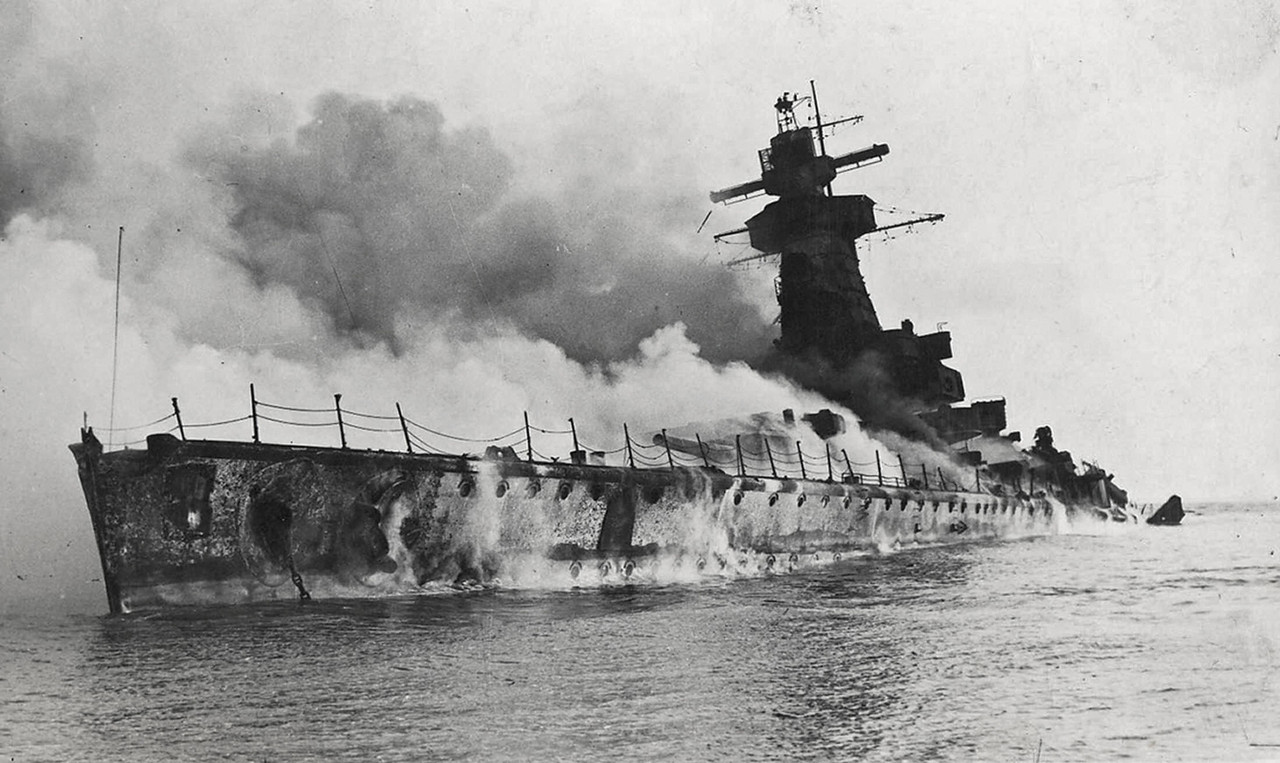
She looks like nothing more than a floating wreck. Truly. No German ship has
ever taken such a beating in history. Two out of three crewmen are casualties; two out of
five are
dead.
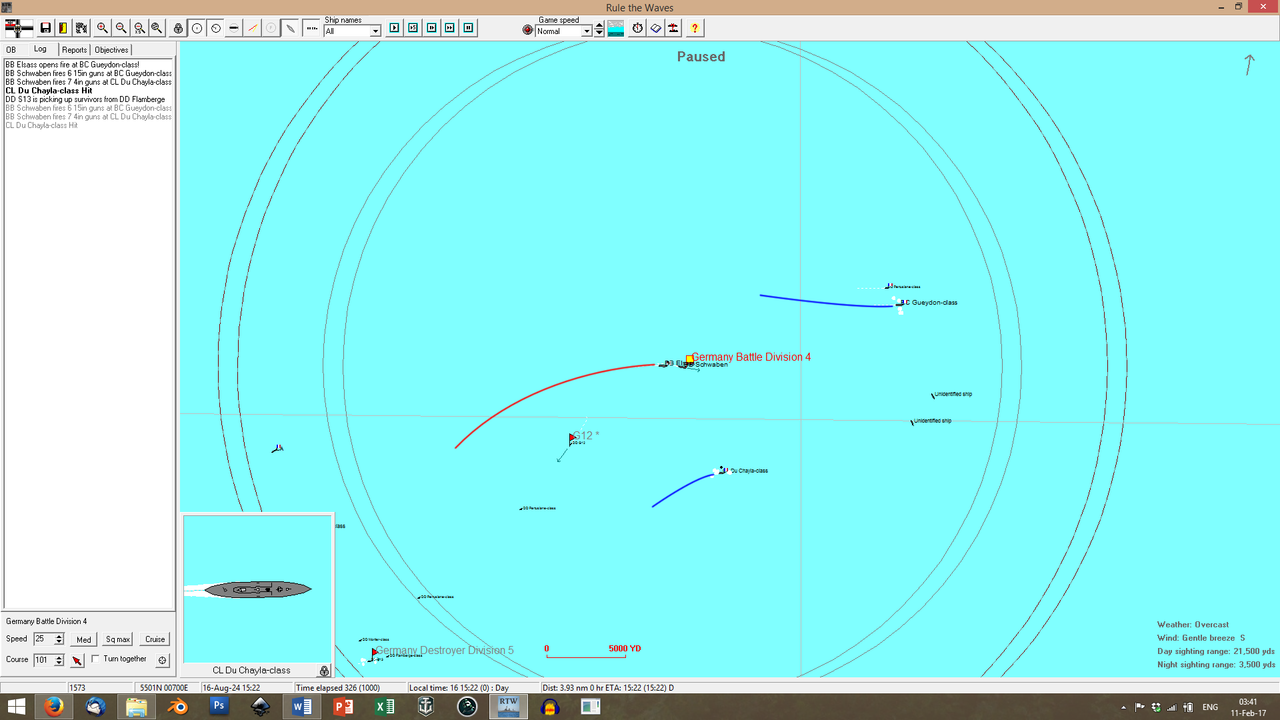
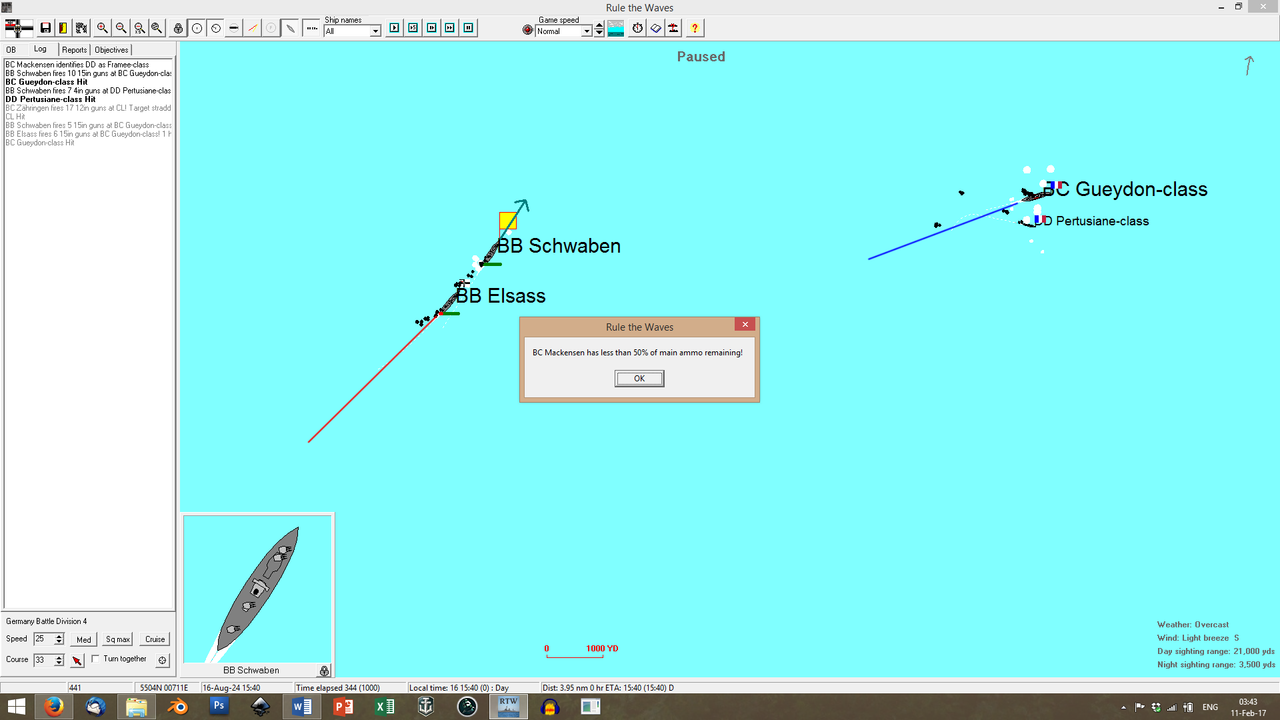
It is left to Scheer to clean up.
Elsass and
Schwaben scatter the French destroyers with their secondaries and engage the last
Guedon, driving her towards the east and Helgoland.
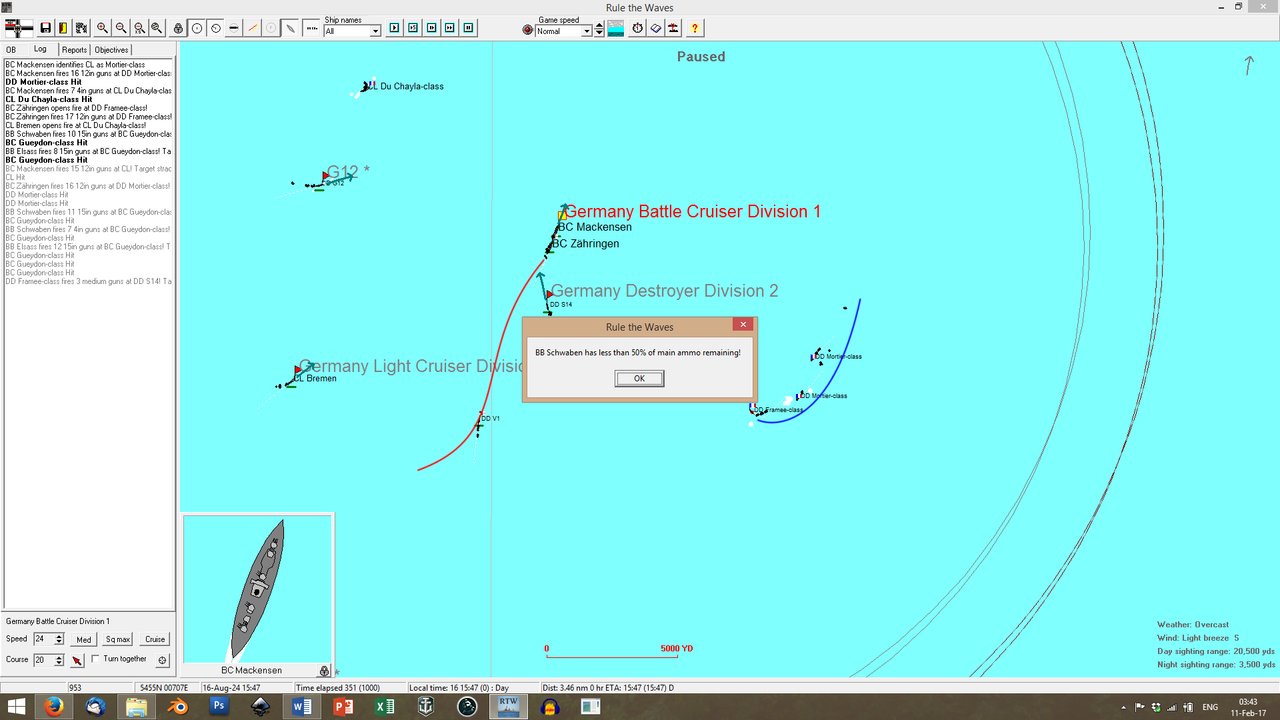
Meanwhile, Hipper is smashing the French destroyer screen that tried to run down the hurt
Schlachtkreuzer. 12-inch guns make short work of the French tincans.
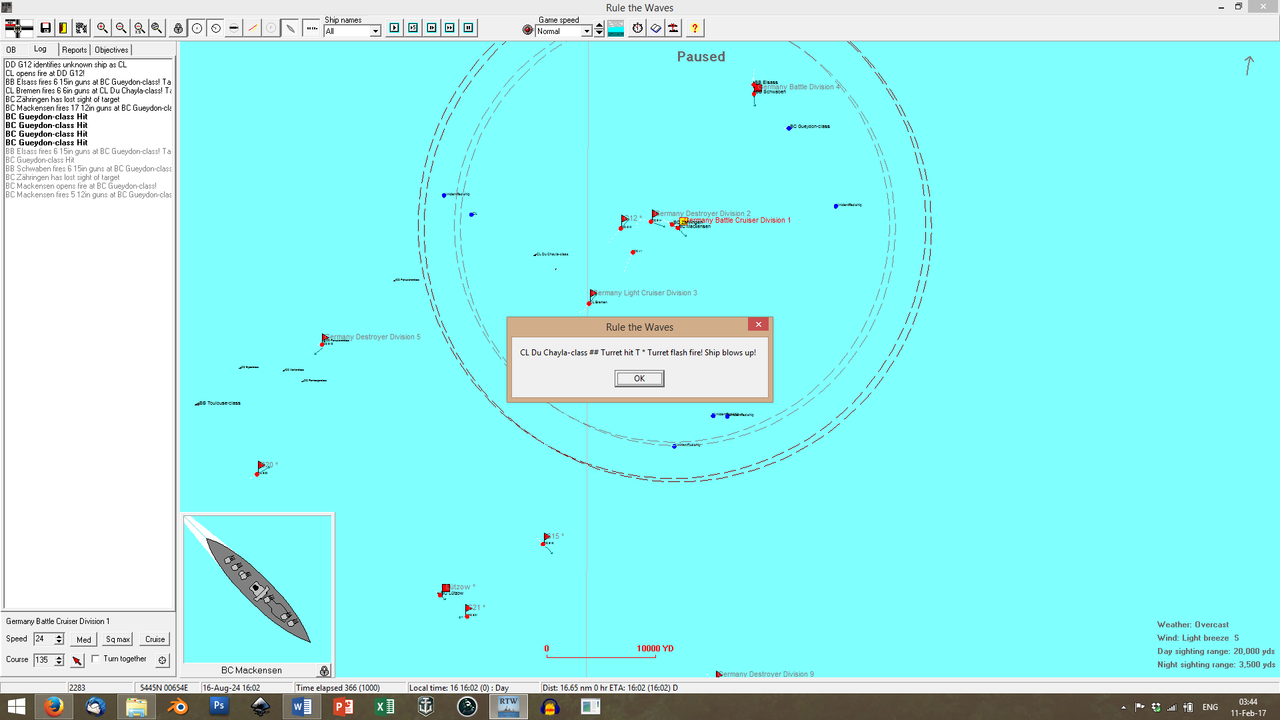
And little Bremen, who has spent the entire fight trying to catch up with the fleet, her old boilers almost bursting at the seams, as always, finds her own little moment to claim glory. Through the French destroyer formation and the smoke, she spots a French
Du Chayla cruiser - which she engages with her old, worn-out six-inchers.
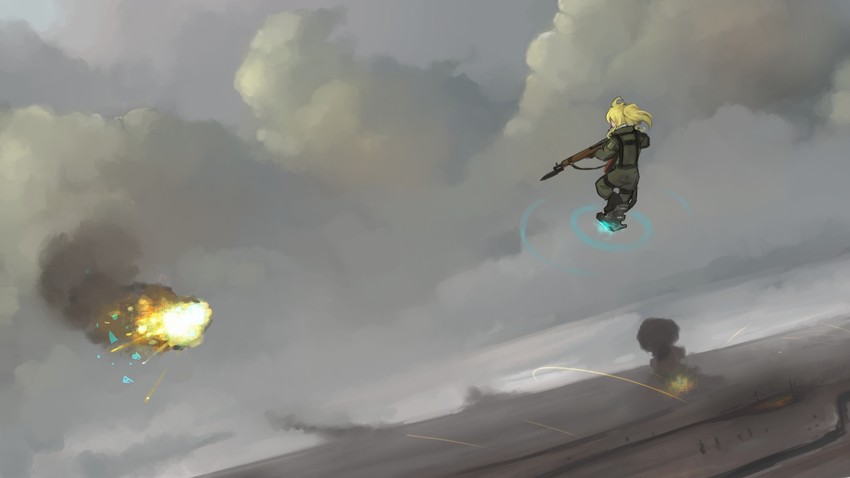 Booooooom
Booooooom.
Seriously, Frenchies.
Bremen is a ****ing
legacy ship, built in the
nineteenth century.
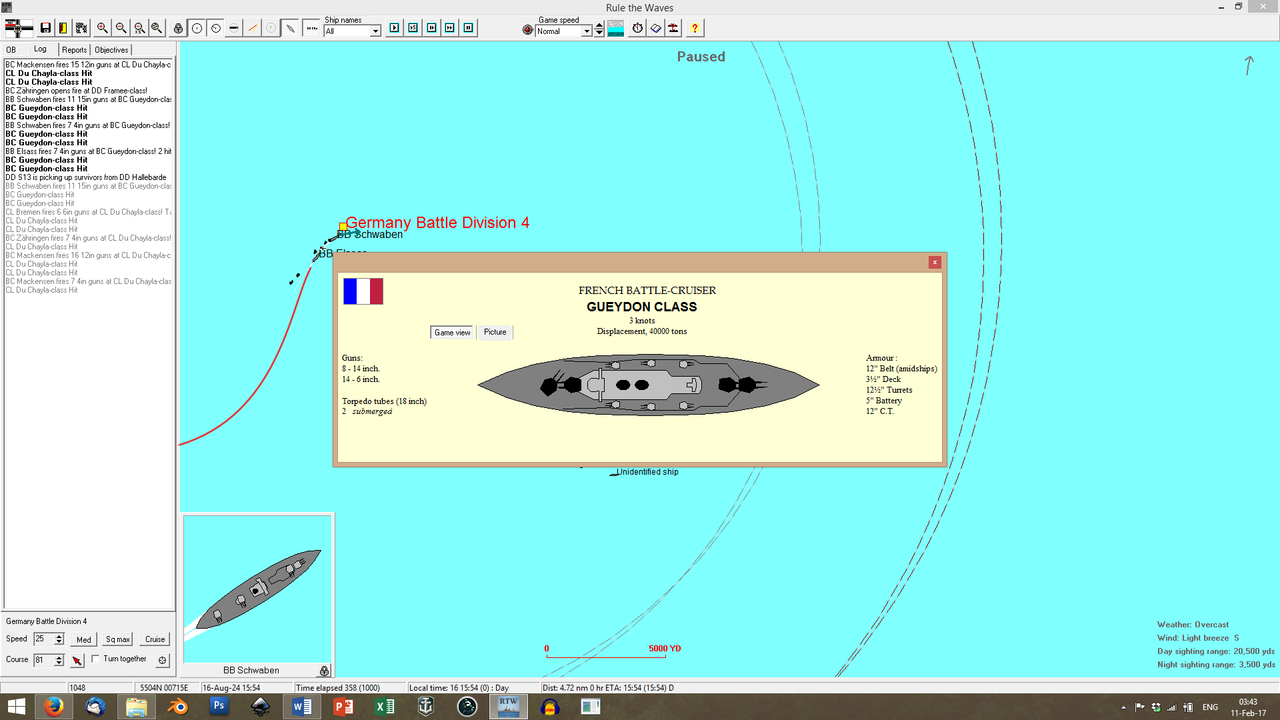
Scheer claims his own cut of the meat at 15:54. The last
Guedon, her guns utterly silenced, strikes her colours.
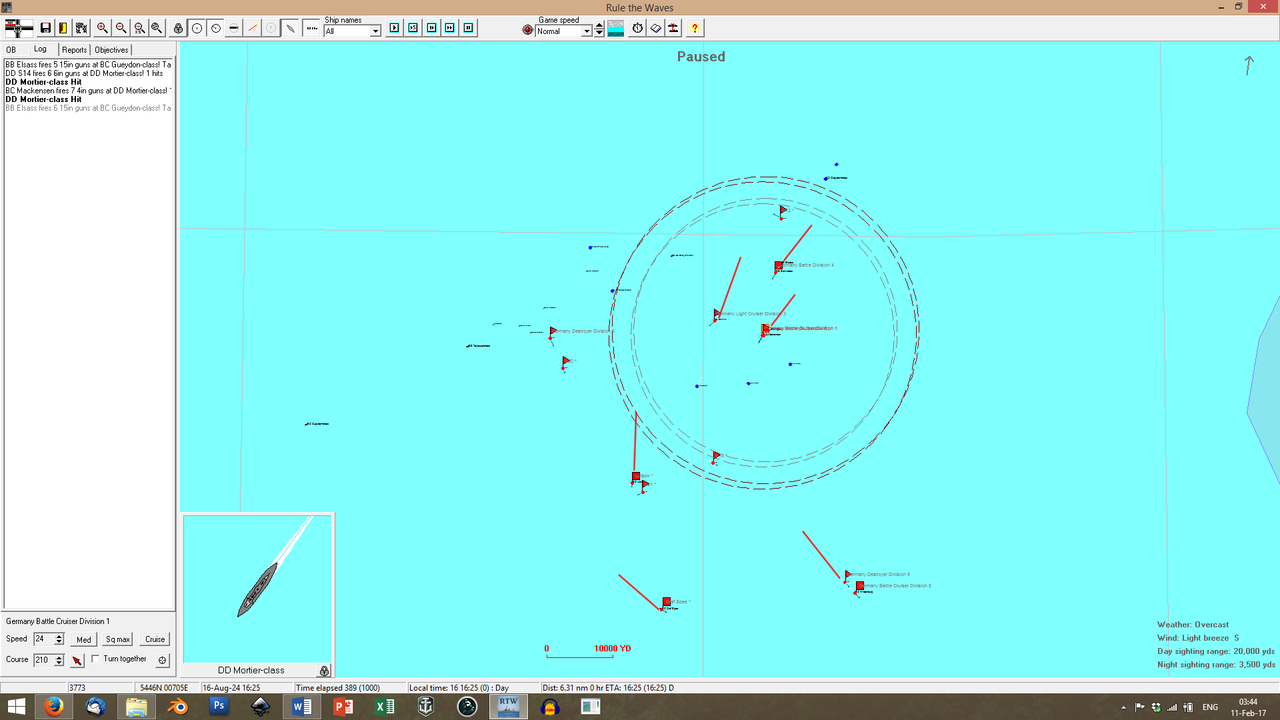
There is only the few surviving destroyers left to hunt down and kill.
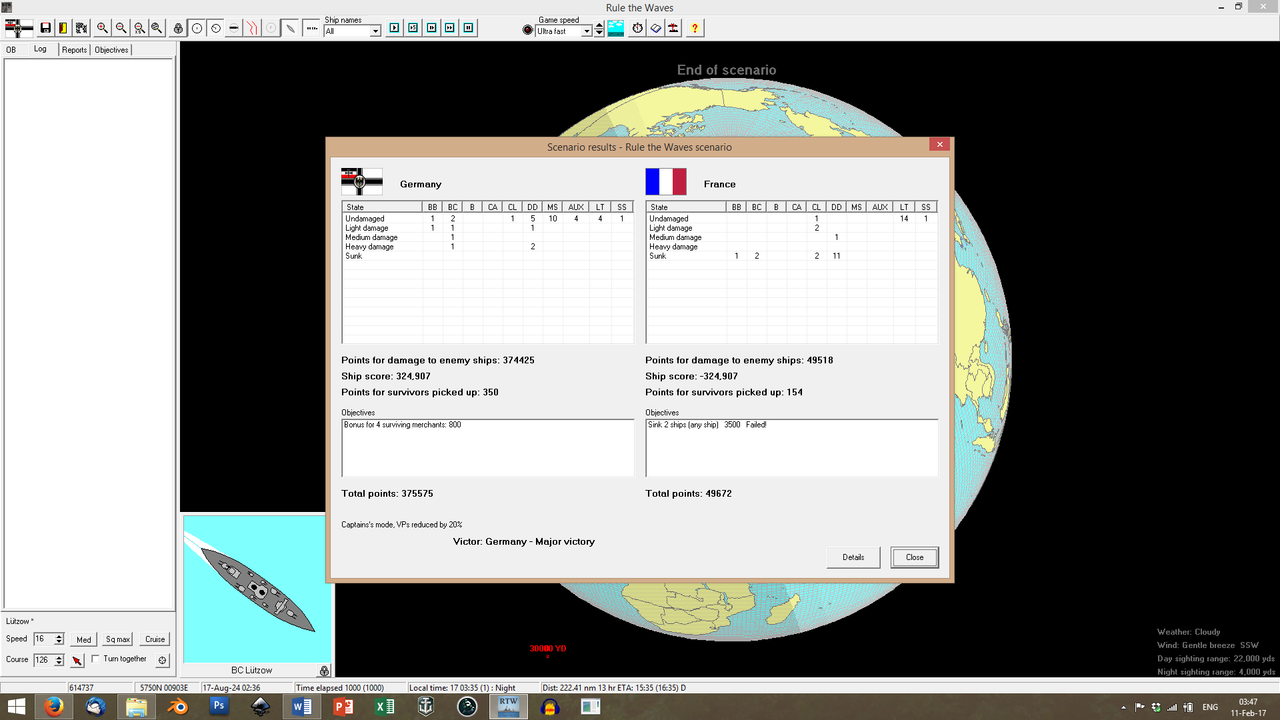
Haha.
Hahaha.
HAHAHAHAHA.
The victory is
total. Despite the horrific pounding the
Graf received, she
somehow reaches port; the Germans have been mauled (especially the
Schlachtkreuzer divisions) but have
lost no ships. Even the
S15, struck by a French torpedo,
survives to fight another day. There cannot be a more eloquent demonstration of the new
G9's durability!
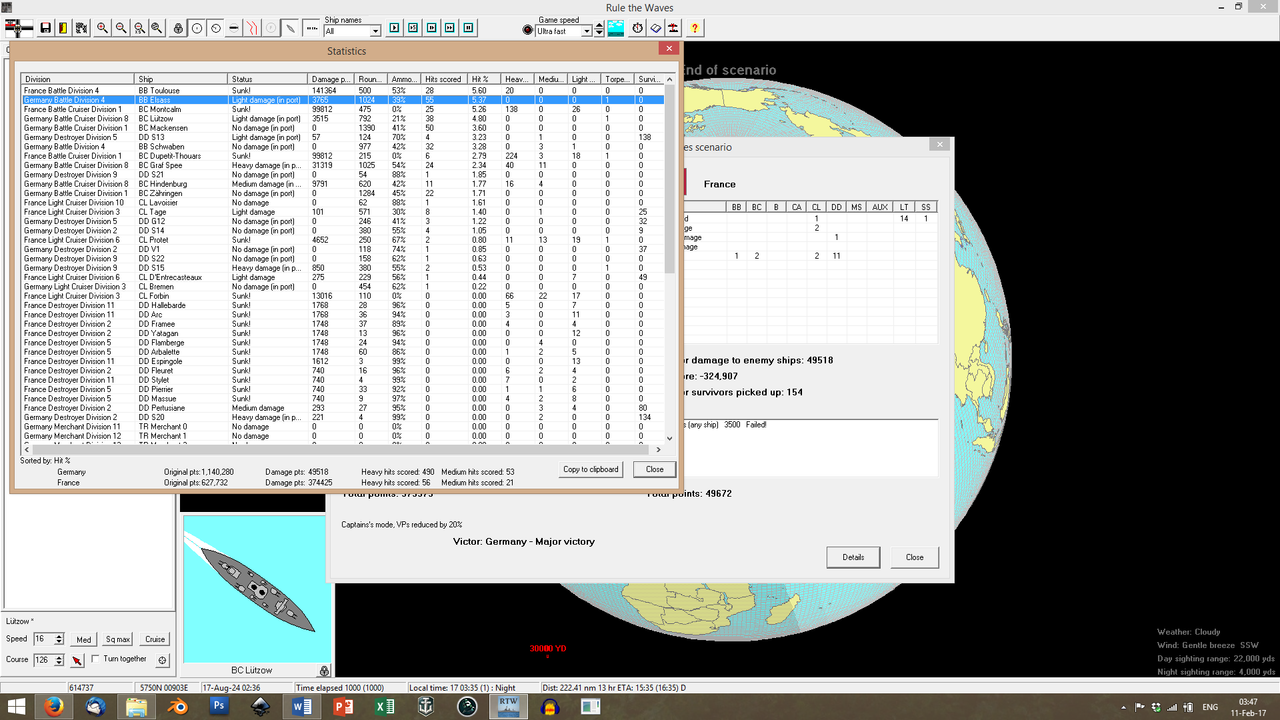
Meanwhile, the French have lost three of their biggest capital ships, including the ultra-modern 40kton
Montcalm and
Dupetit-Thuars, not to mention the
Toulouse. And, of course, we have not begun to address the
massive blow that the French light forces received in this battle. Two light cruisers gone; and, perhaps more significantly,
eleven Destroyers, out of a total of twelve were sent to the bottom of the Bight. France's escort fleet is utterly
gone, right now.
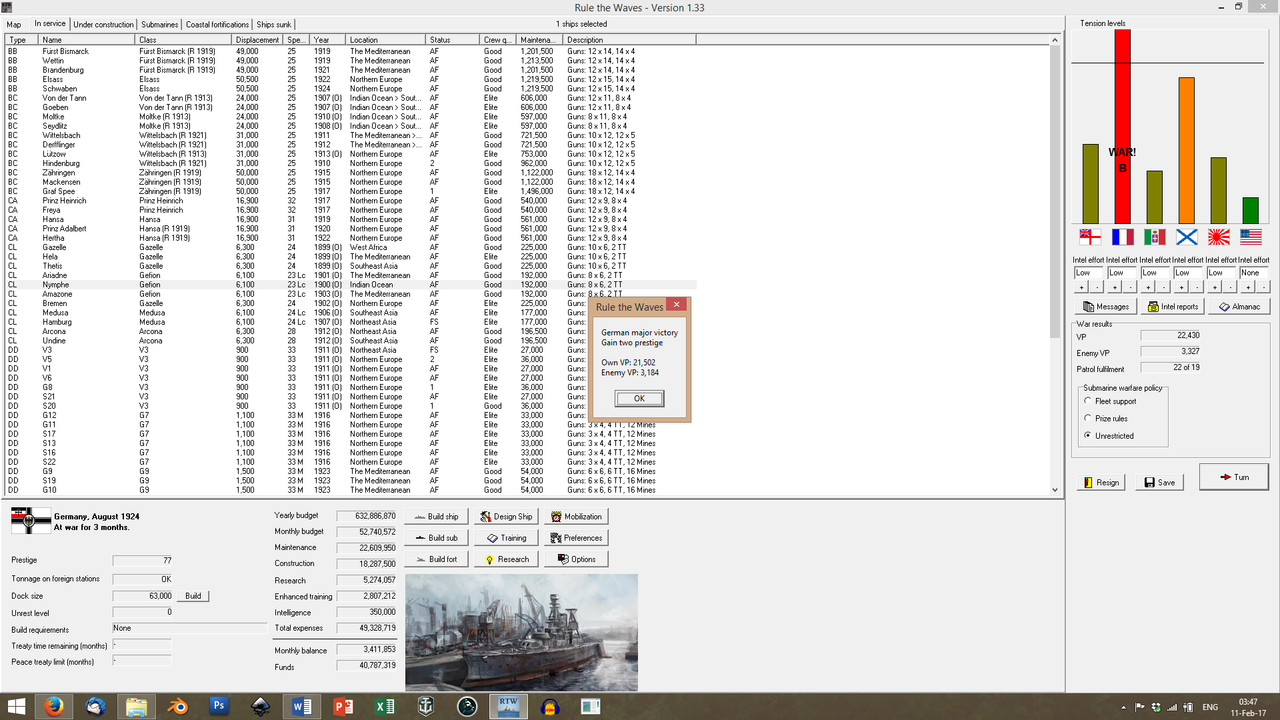
And, by God, do they
feel it!